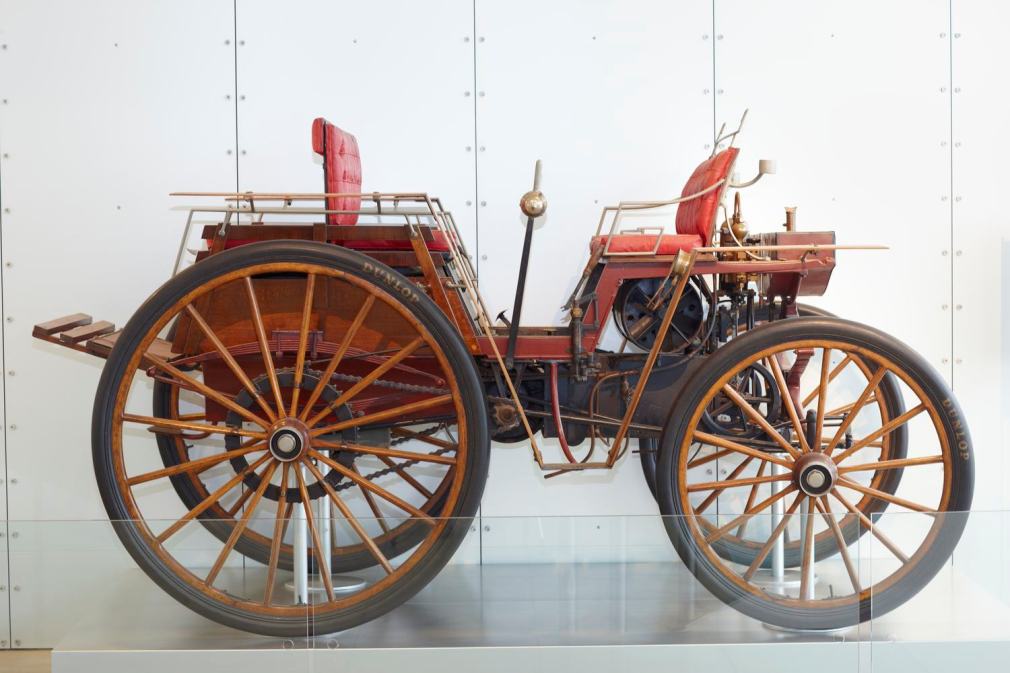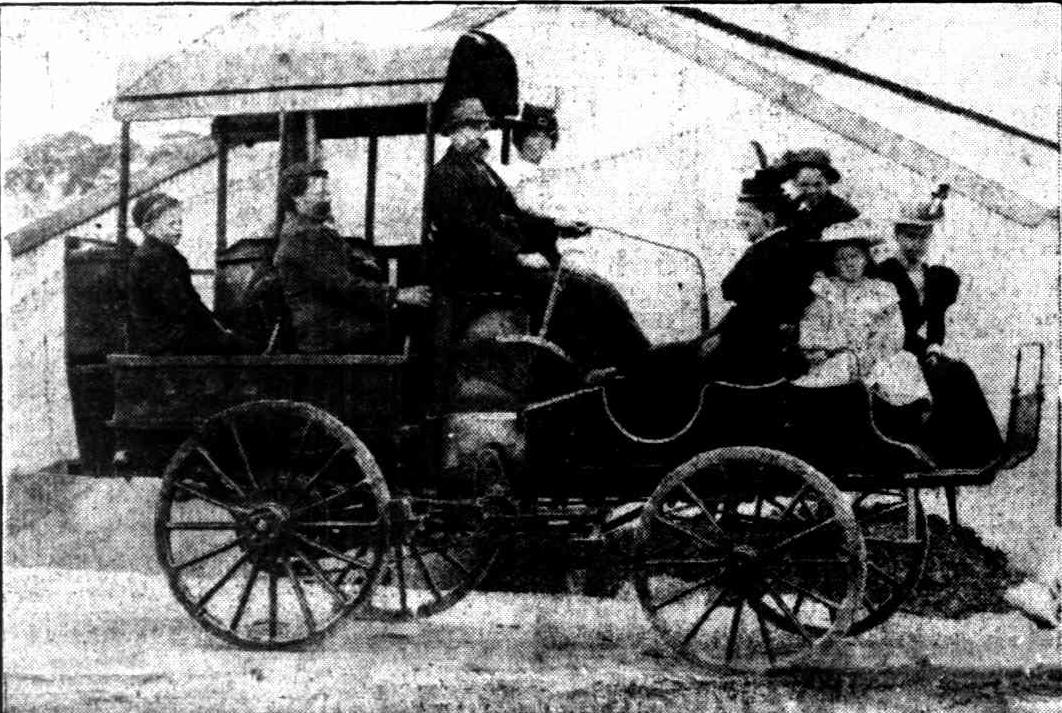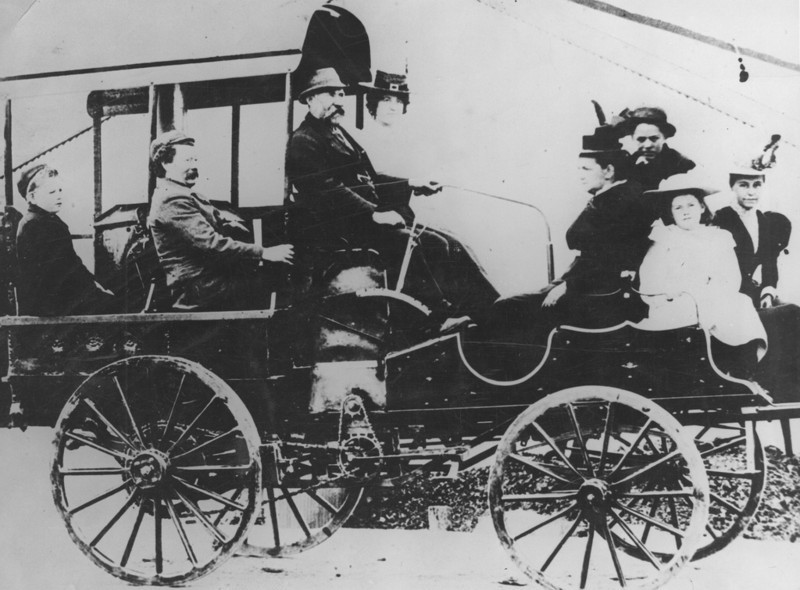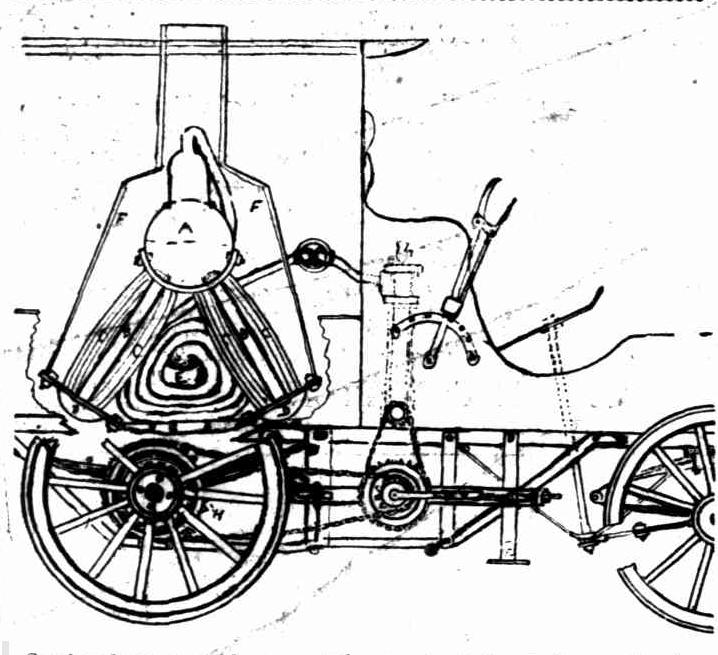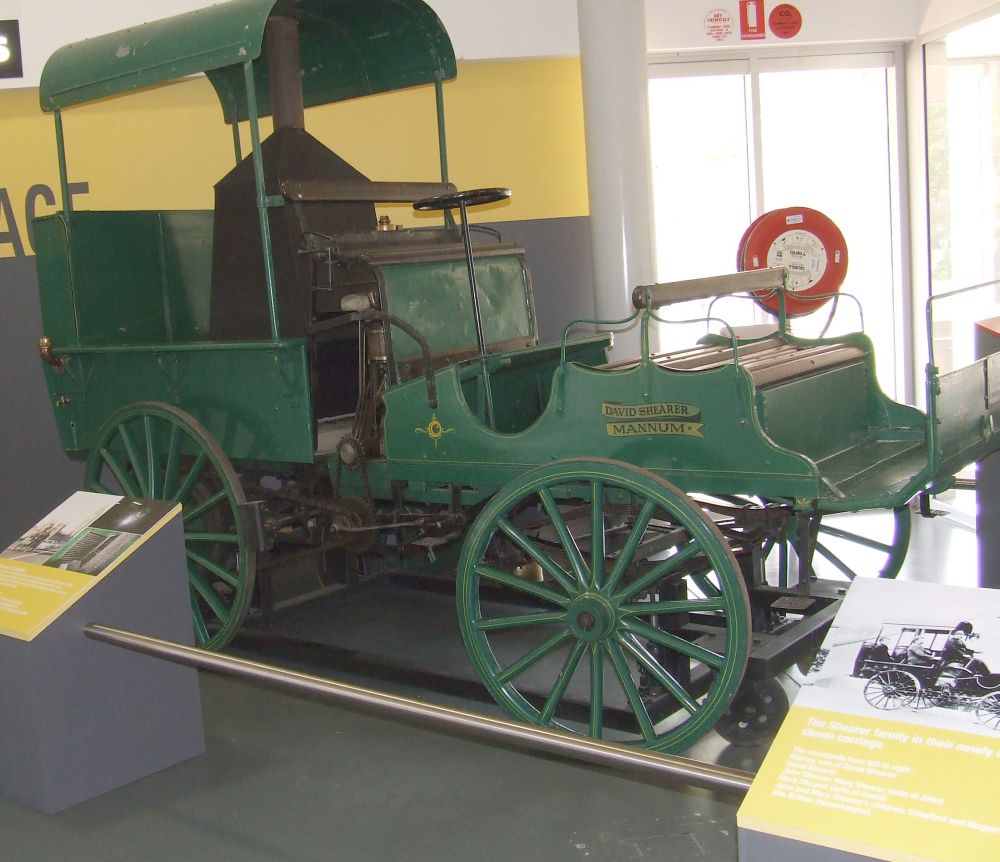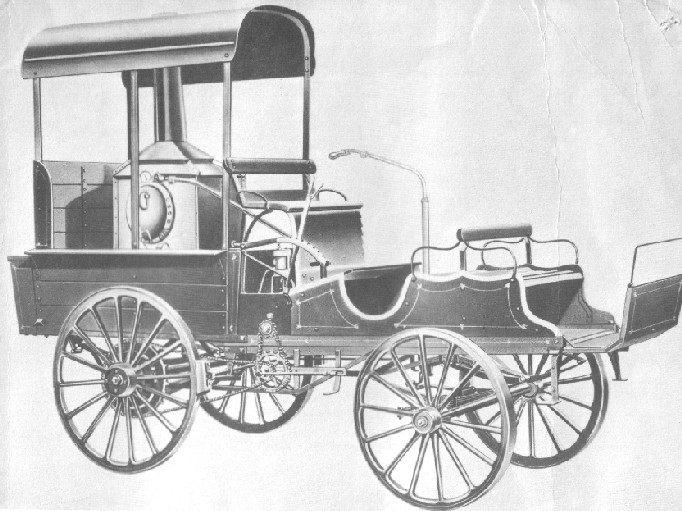Motor car Tours to and in Pittwater Show us the way this place once was
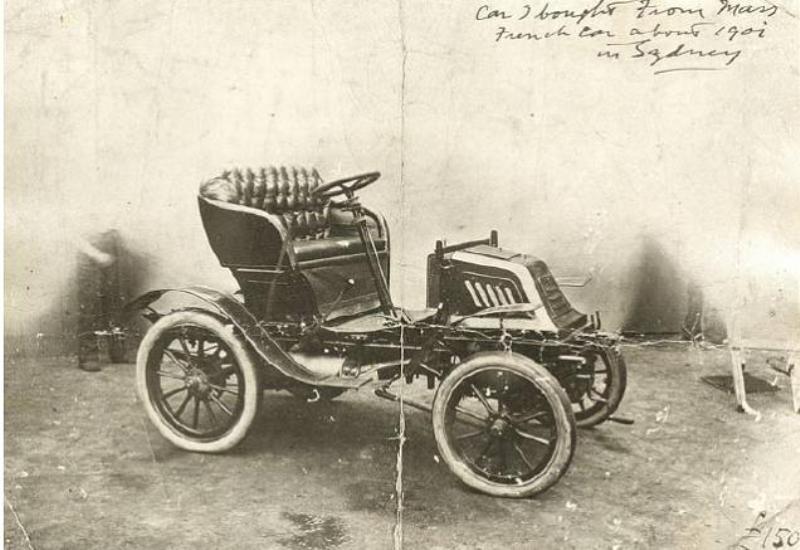
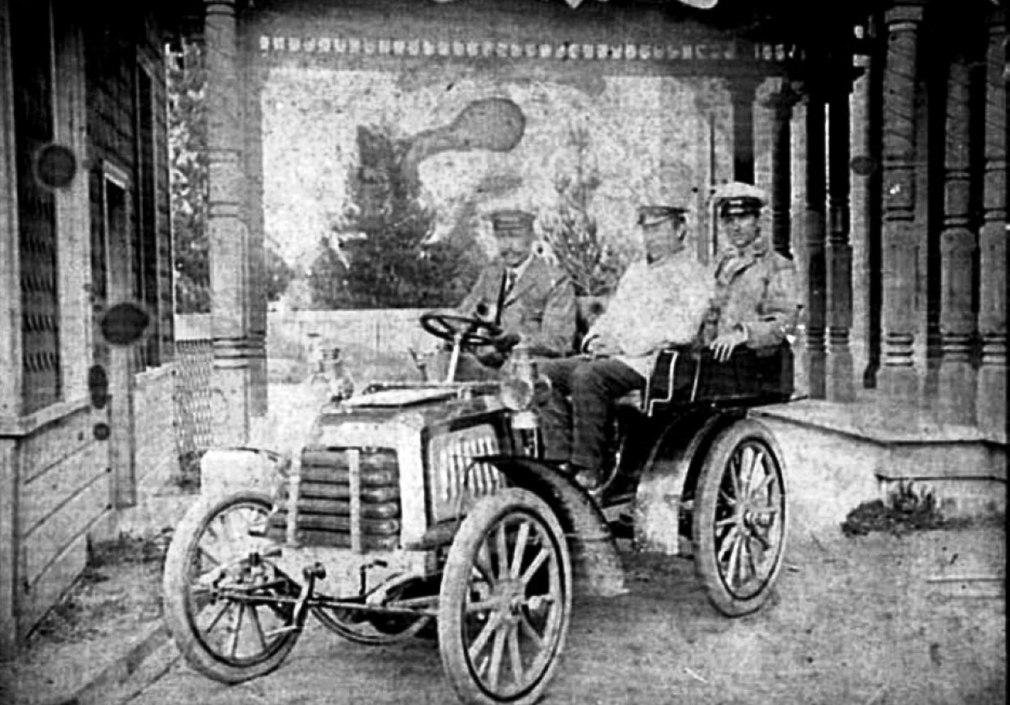
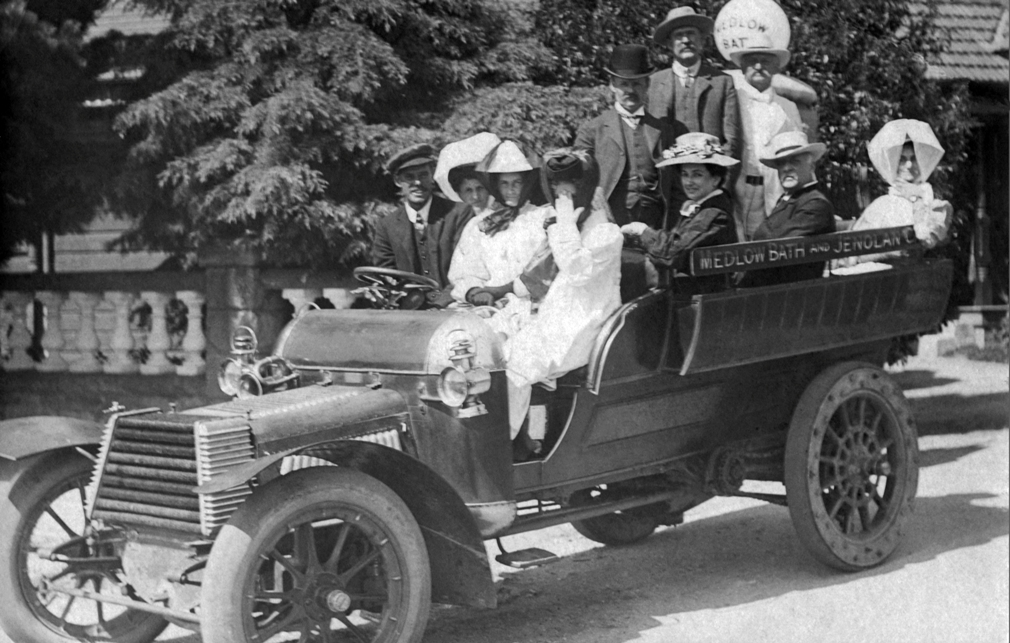
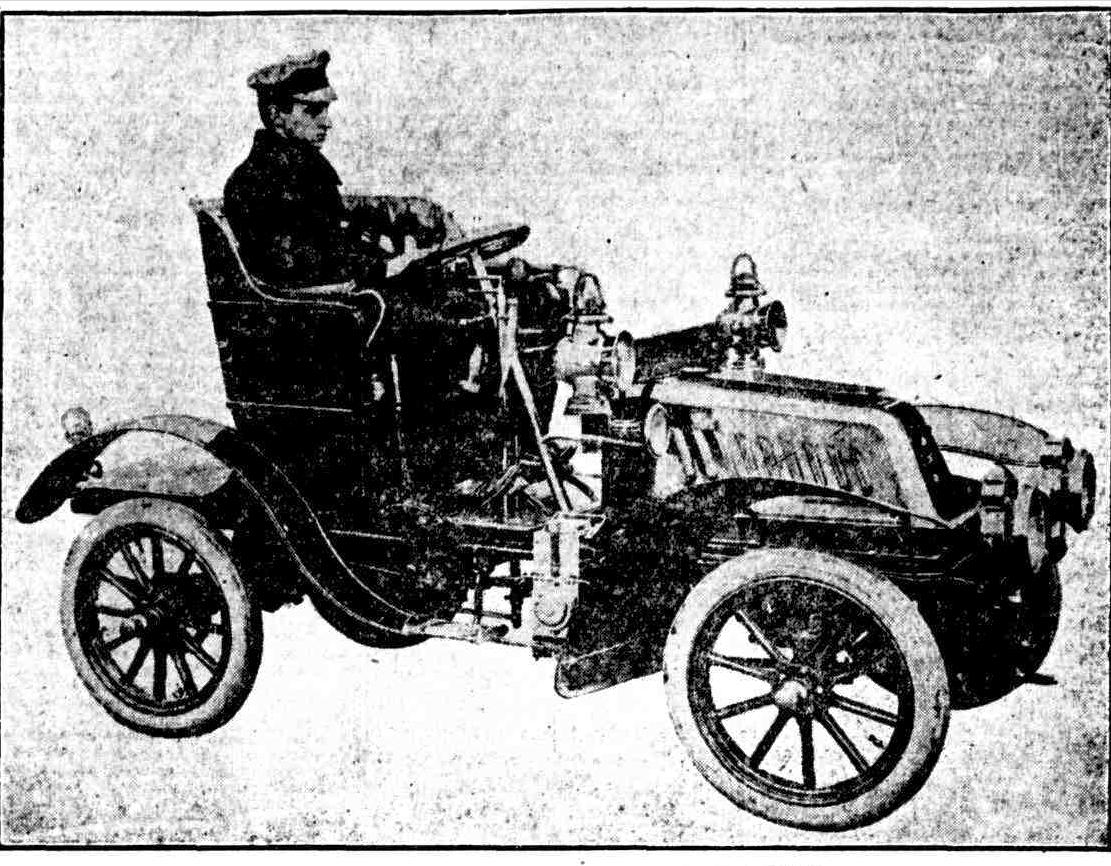
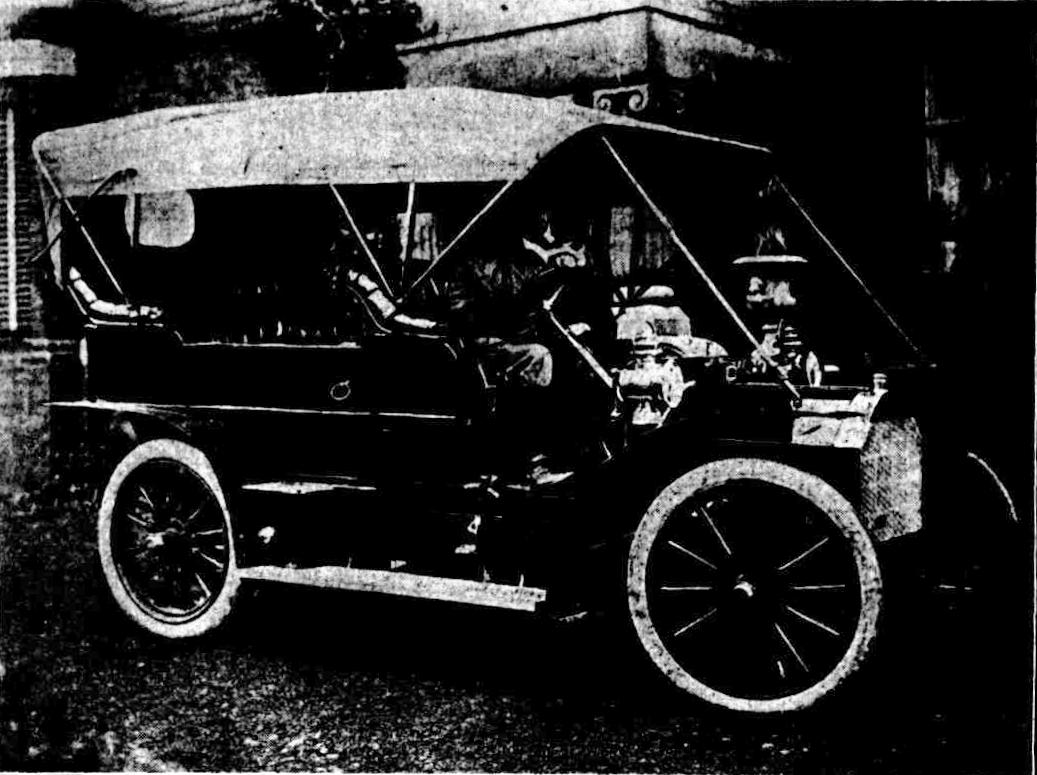
Visit picturesque Newport and dine at Greig's Hotel. The coach trip from Manly is one of the prettiest in N.S.W., and the hotel garden is an ideal place to lounge about in whilst your dinner is digesting and your cigar is helping or retarding the process. From Manly take the coach to Rock Lily, and thence for Greig's coach, which is free to passengers dining at Newport Hotel. If you are a cyclist, by all means ride your bike— the run from Manly pier is about 12 miles, and the cycling path makes the Journey easy, especially for ladies. HOLIDAY EXCURSIONS. (1901, November 10). Sunday Times(Sydney, NSW : 1895 - 1930), p. 2. Retrieved from http://nla.gov.au/nla.news-article125886153
FAVORITE CYCLING ROUTES.
l : FROM MANLY TO NEWPORT AND BAYVIEW.
 A cycling tour for an afternoon or a day, with good roads, a bracing atmosphere, and incomparable scenery is a condition which should bring Joy to the heart of any bicycle rider, beginner or old hand, novice or veteran, affecter of the drop or diamond frame. The conditions named supply the materials for the perfect short bicycle ride, and when the writer credits the coastal road between Manly and Newport, Barranjoey, or Bayview with that description, those whose good fortune it Is to know It will have no hesitation in agreeing with him. For the benefit of those who have not an Intimate acquaintance with the ins and outs of the road, Its windings, and its crossings, we to-day publish a map Illustrating the route, replete with all the information which a cyclist a’wheel can require. The road has been carefully traced out, measured, and verified by actual experience, so that It can unhesitatingly be accepted as thoroughly reliable. This map is the first of a series that we purpose publishing In our Saturday's Issues giving information about cycling routes.
A cycling tour for an afternoon or a day, with good roads, a bracing atmosphere, and incomparable scenery is a condition which should bring Joy to the heart of any bicycle rider, beginner or old hand, novice or veteran, affecter of the drop or diamond frame. The conditions named supply the materials for the perfect short bicycle ride, and when the writer credits the coastal road between Manly and Newport, Barranjoey, or Bayview with that description, those whose good fortune it Is to know It will have no hesitation in agreeing with him. For the benefit of those who have not an Intimate acquaintance with the ins and outs of the road, Its windings, and its crossings, we to-day publish a map Illustrating the route, replete with all the information which a cyclist a’wheel can require. The road has been carefully traced out, measured, and verified by actual experience, so that It can unhesitatingly be accepted as thoroughly reliable. This map is the first of a series that we purpose publishing In our Saturday's Issues giving information about cycling routes.
The ride may be commenced at either Manly, North Sydney, or Mosman's Bay. For the reason that the road along the North Shore ridge is known to all residents of Sydney, without further explanation It has been omitted from the map, which takes up the work of illustrating at the Spit, Middle Harbor. Here the roads from either North Sydney or Mosman's converge, and run over a good surface either Into Manly or, as the map shows, across a cut through Greendale, picking up the main Newport road a few miles down the coast.
Newport is merely a resting-place, dotted among the hills that sweep down to the valley of the Hawkesbury, near Its mouth. It is situated on the east side of an arm of the estuary, known as Pittwater, and the few residences there have frontages to an almost landlocked harbor way of great beauty. The mouth of the Hawkesbury and the commanding heads of Broken Bay, with five miles of rolling ocean between them, are seven miles away, and along the arm of the estuary lies a succession of fascinating bays. Steeply falling hills, wooded to the water's edge, roll down and meet the bays, and the water on a hazy summer's day' takes on an Intense blue. The beauties of M'Grath's Creek, the Basin, Careel Bay, and Barranjoey are admired by all those who have visited this fairyland, and need to be seen to be understood. Words could not paint the scene which may be viewed from the heights of Barranjoey Heads on a blazing summer's afternoon, when the water takes on its deepest color, and the hills flash green, and a world of oceans seems unrolled to seaward. The majestic Lion Island and the rolling entrance to the Hawkesbury lies just below the spectator on the one hand. Seaward he gazes on the limitless Pacific, which at his feet surges on to a dazzling beach of snowy whiteness, and Inland is an entrancing vision of wooded hills and blue lakes seen through a light hazy mist. The rugged heights of Kuringai Chase roll away westward, and the lighthouse Is the only thing that makes civilisation real in the imagination. This scene is but one of the pleasures of Pitt-water, which is within an hour and a half's easy ride from the city. It is, therefore, not to he wondered at that Newport is a favorite ride.
The ride from Manly to Newport is the one which is perhaps the most popular, for it is the shortest, and includes from Sydney a pleasant little run on the Manly harbor steamer. Newport, as explained, is on the eastern shore of Pittwater. Across the arm, a matter of half a mile or so, is a small settlement known as Bayview, the road to which has been lately very much Improved, until the run up the west side of the water has become quite as popular as the old Newport ride. Accommodation of a first-class quality may be obtained on either side.
The run from Manly to Newport can be accomplished by cyclists of any calibre riding comfortably in an hour and a half, while tho "scorchers" can crowd It Into about 60 minutes. The journey is, of course, a longer one if North Shore or Mosman's Bay Is made the starting point. Then the high ridge running along the north shore of the harbor, and dividing the waters of Port Jackson proper from Middle Harbor Is skirted on a level road with a splendid surface, until the tract starts to fall to the level of the water at the Spit, Middle Harbor. Tills fall Is nicely graded, and can be ridden In comfort at a good speed with a brake, while the views which open up as the cyclist rushes down the incline of a sweeping valley from the ridge to the shores of what Is perhaps the most beautiful natural harbor In the world well repay him for the extra exertion of the longer ride. After the drop to the water, Middle Harbor is crossed in a Government punt at a cost of 2d. The climb up the ridge again on the east side Is not quite so well graded as that just descended, but yet is perfectly easy of negotiation when the surface is good, which is usually the case. When the ridge is climbed the rider has the option of two roads, both of which are good. He can either take the turn off to the loft through Greendale, which saves a considerable distance, and comes out between Manly and Brookvale on the Newport road, or he can go down Into Manly, and pick up the route there. The road from Manly runs out along a lovely stretch over Curl Curl Lagoon, and passes a turn off to the right, which is marked by a fingerpost — "To Harboard Estate," before the Greendale road is fallen In with. After these two roads converge the route passes over gently undulating and pretty country through Brook vale, a tiny settlement with a public school and post-office, and over the Stoney Range. This is a fair hill, and will he found to be indicated in the map by arrows. There Is a short pinch at the top, but the hill can be easily ridden, though It Is not a rise which should be rushed on account of the pinch at the top. The descent is straight and perfectly safe, even without a brake. After a short run through what is almost a natural avenue, the road opens out on to the Deewhy Lagoon, which runs In off the ocean. The road just hero for half a mile Is always bumpy, but if the rider will ease up slightly ho will experience very little inconvenience, and the bad piece does not extend far. The road then winds up a long hill In full view of the ocean, which thunders in on a fine sandy beach Just below the rider. A slight turn to the left is made on top of the kill, and the road falls away into Narrabeen; the concluding mile bolero this place is reached being ridden alongside one of the finest beaches on the coast, A short rush down bill brings the rider unexpectedly right on to this magnificent beach, and the change from winding among the trees to the continuous roar of giant rollers, which seem to dash up almost beneath the handle-bars, is an interesting incident of a pleasant ride.
A rest may be called at Narrabeen, and, if required, refreshments obtained. There is an hotel and an accommodation house right on the road.
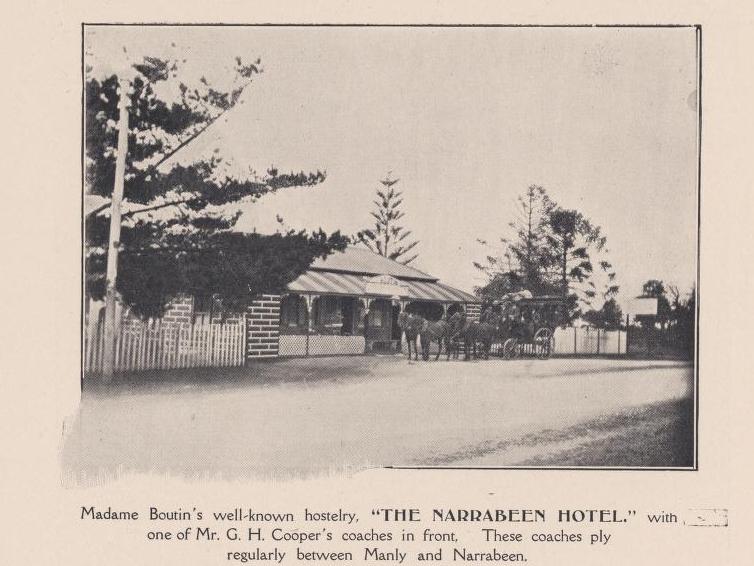
Narrabeen Lakes Estate, 1906 / Arthur Rickard & Co. Ltd Auctioneers. 1906. MAP Folder 114, LFSP 1695 (Copy 1). Part 2. (sales brochure) Image No.: 22704748, courtesy National Library of Australia.
Visit: Charlotte Boutin and The Firecracker That Closed Narrabeen Hotel by Ken Lloyd (SavaLloyd)
The lagoon here — the upper reaches of which are famed for their scenery — is crossed immediately on leaving. The lagoon is really a big arm of the sea, which is just over a line of sandbanks about half a mile on the right. A run of a mile and a half brings the rider to the Cutting-hill, which is one of the stiffest climbs on the route. It has, however, a good surface, and over the top of this rise the road drops for halt a mile into Rocklily. There is another hotel here. A few hundred yards further on the road divides, the left-band portion leading to Bayview, on the west side of Pittwater, and that on the right hand to Newport. Following the right-hand road after a couple of not insignificant hills are climbed, the ocean is once more opened out from the top of a high cliff, and on a fine day a magnificent prospect is obtained. From this point also Pittwater on the left first becomes visible, and it appears a great lake nestling among the rolling hills. Down through a ferny glade, over a slight rise, and down another long descent, and Newport is reached. The rider has the choice of an hotel and an accommodation house for convenience. Here boats and bathing can be obtained, and the hays and coves of Pittwater afford amusement in an endless variety of ways. Good fishing is also to be obtained in the direction of Barranjoey.
The road extends, as will be seen on an investigation of the map, on to Barranjoey, where the lighthouse is situated. The hills on this route, however, are almost unrideable, and the road is scarcely ever used by cyclists.
The road on the Bayview side runs right along the shore of the harbor, to Church Point, a distance of two or three miles. There are two accommodation houses here, and good boats are to be obtained at the point, where there Is a splendid wharf. The road all the way is of sandstone formation, and is found at its best after heavy rain. Sometimes in continued dry weather it becomes loosened, but a shower or two of rain soon puts It right again. It can generally be described as a splendid road for cycling. None of the hills are very bad, and there are only two places on the whole route where it is necessary that, more than ordinary caution should he exercised. They are both on the Newport road. One is a hill recently graded, encountered soon after Newport is left on the return journey. It is indicated in the map by arrows. There is a sharp turn half-way down in a cutting and cyclists should not let their machines go until they are safely round this. A similar turn, though without the cutting, will be found in the Cutting-hill, between Narrabeen and Rocklily, when returning to the city. Care need be exercised to make the turn safely. Apart from these two points the road can be ridden In perfect safety by the crudest novice.
All the cross-roads and "turn-offs" which are marked in the map are surveyed roads, but are to all Intents and purposes impracticable for cycling, as they have not been formed. Some cyclists have ridden over them, but more from a spirit of adventure than from any hope of an enjoyable ride. The distances on the map are all measured from Manly. FAVORITE CYCLING ROUTES. (1897, July 31). The Daily Telegraph (Sydney, NSW : 1883 - 1930), p. 4. Retrieved from http://nla.gov.au/nla.news-article238392082
The new cycle track was officially opened on Saturday September 7th. The report reads, and includes, a photo of a motor car heading north:
The New Cycle Track— Manly to Pittwater.
Pleasant conditions attended the official opening on Saturday afternoon by Mr. E. W. O'Sullivan, Minister for Works, and president of the New South Wales League of Wheelmen, of the cycle path from Manly to Pittwater, recently illustrated in ' The Mail.' The weather was beautifully fine, and the Path, as dry and resilient as a cinder path 0n a summer day.
It was arranged that a procession of motor-cars, cyclists , and drags containing non-riders, and headed by a motor-car carrying the Minister for Works, would leave the square opposite Manly pier at 3. 1'5 pm. But in consequence of the 2.30 p.m. boat from Circular Quay, with a contingent of 300 cyclists, arriving a little late, the procession did not not start until 3.30pm. Half an hour prior to that the Minster arrived in the steam launch Eva, With a party of visitors, who included Messrs. Price, Wilis, Levy, T' Fitzpatrick, Donaldson, Byrne, and …
The Minister was received by Mr. Quirk, M. L-A-, member for the district, a large number of leading residents of Manly, and the members of the Public Cycle Paths Committee - Messrs J. R. Holdsworth (chairman) A. Blackett Smith and G. Corkhill of the New South Wales Touring Union, Leslie Curnow (hon. Sec) C.A. Grocott and A. H. Short, of the New South Wales Cyclists Union, and Messrs. G. Fowle, H. Floyd, E. J. Branagan, of the New South Wales League of Wheelmen. Fully 300 residents and visitors were -assembled, and accorded Mr. O'Sullivan a hearty welcome.
At least 500 cyclists were present, and as many of them carried flags, flowers, and streamers, a pretty effect was produced when the procession was under weigh. The procession, headed by four motor cars, moved off at a good pace, and about a mile out of Manly reached the commencement of the cycle path, the place being marked by archways erected over the paths on each side of the road, and bearing the sign' Pittwater Cycle Path, 1901 .'' A run of a mile brought the procession to Greendale, where the opening ceremony was to be performed. The hon. secretary of the Public Cycle Paths Committee, Mr. Leslie Curnow, who has been indefatigable in his efforts to have the path constructed, and to see that the opening ceremony was performed under the most favourable conditions, had the place decorated with flags and streamers, so that it presented a very pretty appearance. One could see by the rapid pace at which the cyclists bowled along the path that it Was in good order, and fast. When further consolidated by cycle traffic it will become still faster, and if arrangements are made to keep it in good order the cyclists of New South Wales will be under a debt of gratitude to the untiring labours of the path committee for providing a pleasant run through some of the most beautiful coast line scenery to be found in the State.
The cyclists and visitors having gathered round a temporary platform provided for the occasion, Mr. Quirk, M.L.A., called upon the Minister for Works to declare the cycle path open. The Minister for Works, who was received with cheers, said that on behalf of the people of Manly, as well as the cyclists of New South Wales, he had great pleasure in declaring the Manly to Pittwater cycle path open for all time. (Applause.) It might not be known to all present that it was one of the longest cycle paths in the world. In America the paths ranged from 4 to 17 miles long, in Dunedin they were 7 miles, and in Victoria 15 miles long, but the Manly to Pittwater cycle path, counting 10 miles out from Manly on one side of the road, and 10 miles in on the other side, was 20 miles long.

CYCLISTS ON PATH.
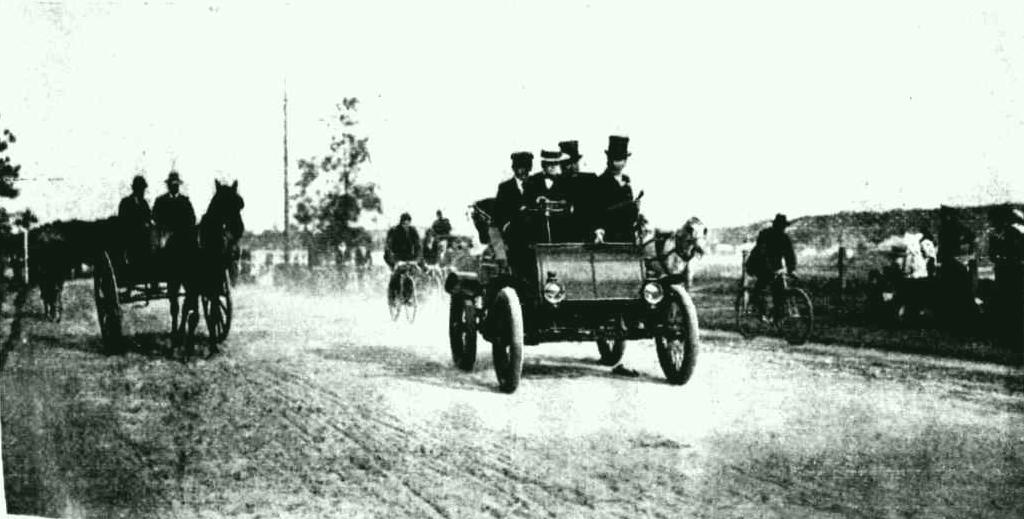
GOING OFF TO GREENDALE.
The New Cycle Track—Manly to Pittwater. (1901, September 14). The Sydney Mail and New South Wales Advertiser (NSW : 1871 - 1912), p. 674. Retrieved from http://nla.gov.au/nla.news-article165237862
NB: Greendale was just out of Manly:
OPENING A CHURCH AT GREENDALE.
A new Wesleyan Church, was opened on Saturday at Greendale, a few miles out of Manly. The building was erected by Messrs. Mingay and Wilkinson, a Manly firm. The Rev. J. E. Moulton (Newington College), the Rev. J. H. Lewin (minister in charge of the Manly district), and the Rev- J. Woolnousjh conducted the dedication service on Saturday, when the .fine weather induced a large crowd to assemble. The tea meeting and social gathering that followed was well attended. As a fitting ending to the dedicatory service a meeting was held in the evenii g, Mr. E. J. Wild presiding. The Revs. J. E. Moalton, J. Woolnough, J. H. Lewin, Messrs. D. Ogilvy, and J. Warner delivered addresses, and Misses Bagnall, Jacobie. and Miles, Mrs. Martin, Messrs. A. Miles, F. Maine, and E. H. Stoney, and Rev. K Masterton rendered instrumental and vocal items. Serviceable help was given during the day by Mesdames Evans, Barden, M'Carthy, Martin, Newton, and Howlett, and Misses Jones, Miles, Alderton, and Bagnall. Opening services were held on Sunday, and the Rev. J. E. Moulton and J. H. Lewin were the ministers. OPENING A CHURCH AT GREENDALE. (1898, August 8). Evening News (Sydney, NSW : 1869 - 1931), p. 6. Retrieved from http://nla.gov.au/nla.news-article113250900
MANLY-GREENDALE TRAM.
TO THE EDITOR.
Sir; On behalf of residents of North Manly, Greendale, Freshwater, and neighborhood, I write to Invite attention to the fact that although the rails of the proposed tramway to Greendale, Narrabeen. etc.. have been laid as far as Curl Curl Lagoon, it would appear as though pressure is being brought to bear to delay the completion of the first section to Greendale, as the lines are being covered with rosd metal, and operations have been suspended at the present terminus near the lagoon. There is considerable settlement in the vicinity of Greendale that would be greatly benefited by being connected with Manly, and the city, by means of the tram, and if it would not pay to adopt a frequent time-table, there would be good reason for a service in the morning and evening, and occasionally throughout the day.— Yours, etc., T. K. HARRIS. MANLY-GREENDALE TRAM. (1902, August 13). The Daily Telegraph (Sydney, NSW : 1883 - 1930), p. 11. Retrieved from http://nla.gov.au/nla.news-article237615011
THE OPENING CEREMONY.
A cycle path, 20 miles in length, 10 miles either way, between Manly and Pittwater, was opened on September 7, when over 1,500 wheelmen from all parts of New South Wales attended. It was opened by the Minister of Works. Mr. E W O'Sullivan.
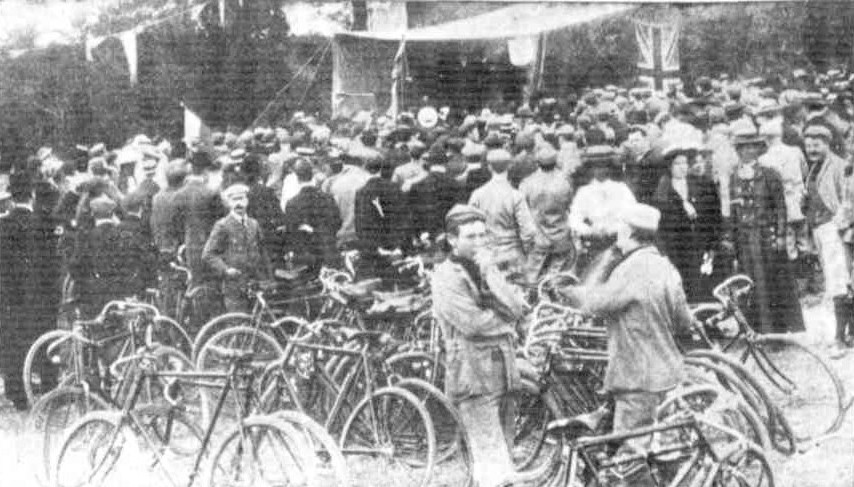
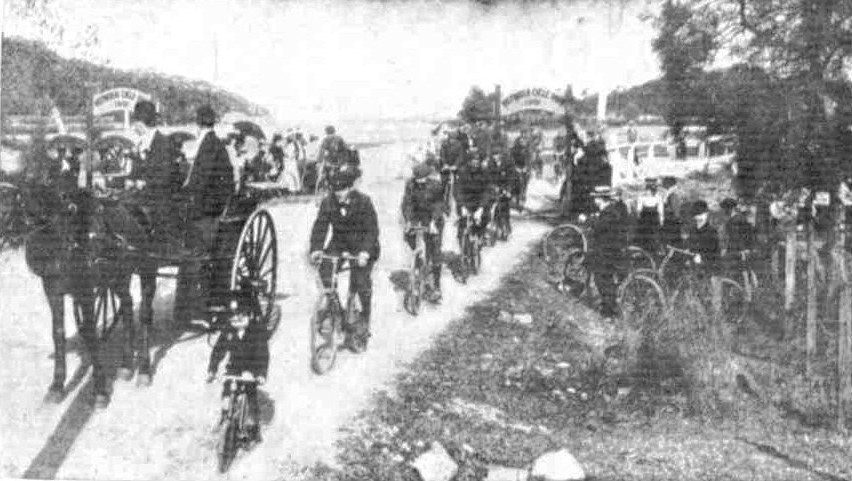
A NEW SYDNEY CYCLE PATH.
THE PITTWATER CYCLE PATH. A NEW SYDNEY CYCLE PATH. (1901, September 14). The Australasian (Melbourne, Vic. : 1864 - 1946), p. 29. Retrieved from http://nla.gov.au/nla.news-article139746417
The interest in cycling during this period cannot be underestimated - motor cars were being seen but most people could not afford such luxuries - bicycles were the way to get around. Having been touted as being used in the Boer War to great effect, and races and clubs springing up everywhere, it is no surprise the area of Pittwater was made accessible for those who wanted cycling-camping trips away within their budgets.
The rise in popularity, and its being followed by local press, affords us, 116 years on, with some lovely early photographs of Pittwater:
Manly to Pittwater Cycle Path.
The views we publish afford an idea of the beautiful district which is opening up for cyclists by the construction of the Manly to Pittwater Cycle Path. The Public Cycle Paths Committee deserve the thanks of all cyclists, for by means of their efforts sufficient funds have been collated to pay half the Cost of the path. The work was generously carried out by the Government….. The Manly to Pittwater path is the second constructed under the auspices of the Public Cycle Paths Committee, and in the future the movement is expected to greatly extend.
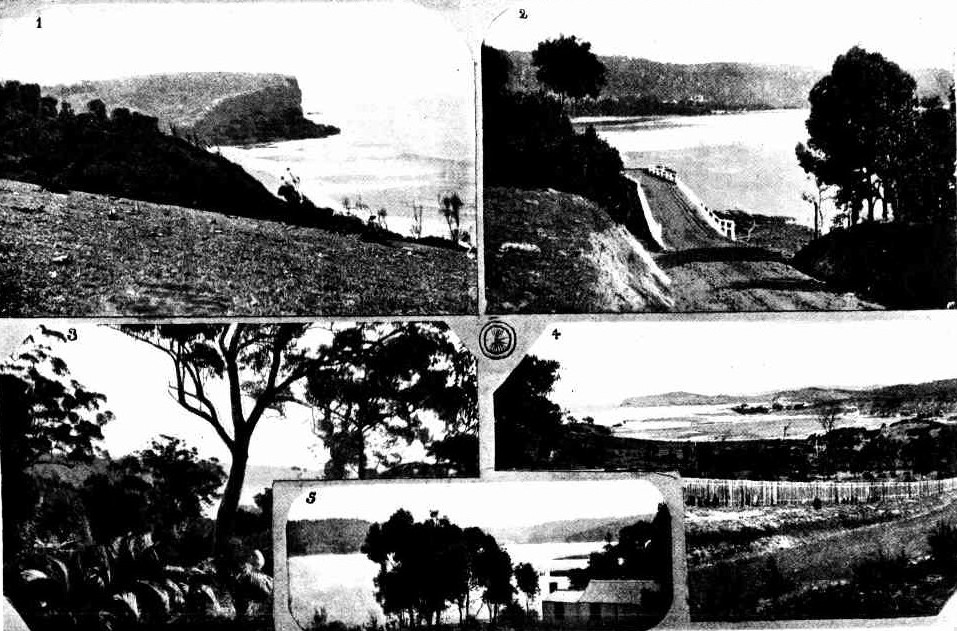
1 A glimpse of coast scenery from Newport-road. 2. Bay View from Newport Wharf. 3. Bush scene near Newport. 4. View near Terminus at Pittwater. 5. Broken Bay. VIEWS NEAR TERMINUS OF MANLY-PITTWATER CYCLE PATHS. Manly to Pittwater Cycle Path. (1901, August 24). The Sydney Mail and New South Wales Advertiser (NSW : 1871 - 1912), p. 478. Retrieved from http://nla.gov.au/nla.news-article165234800
THE MANLY-PITTWATER CYCLE PATHS.
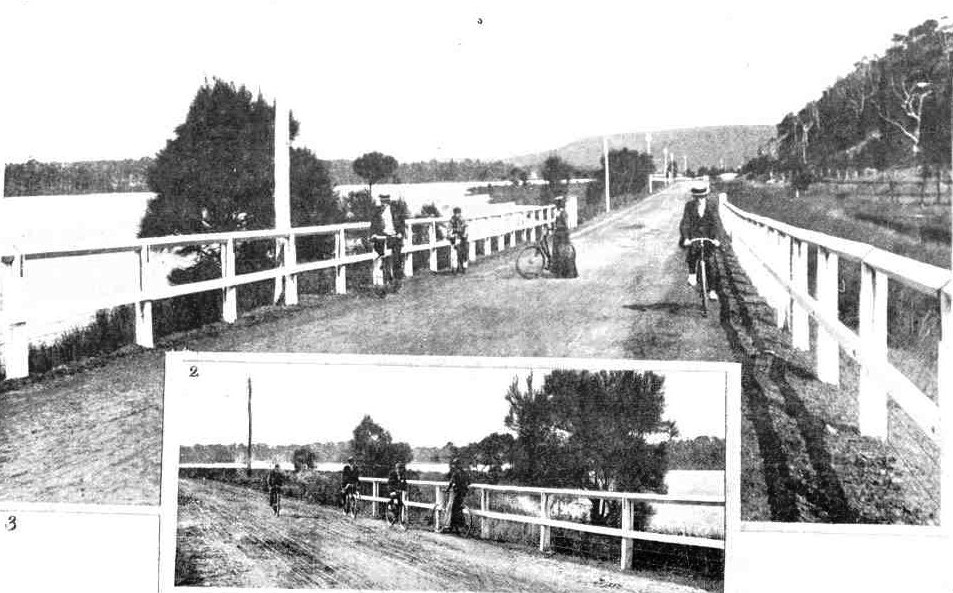
1. An ideal bicycle stretch near Pittwater. 2. The Lagoons, Narrabeen.
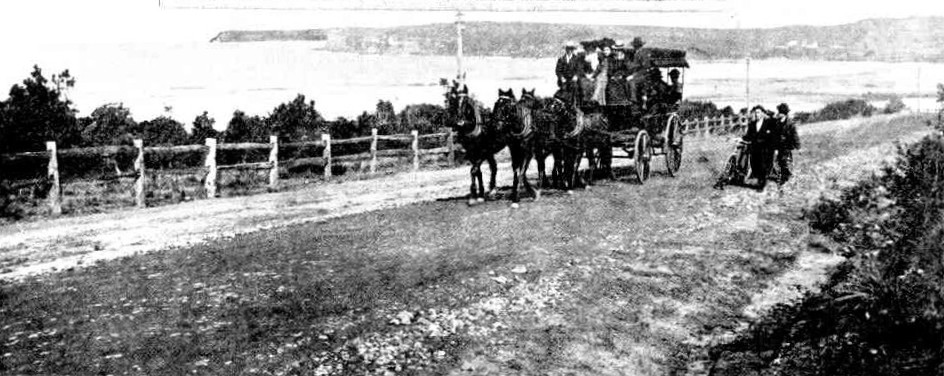
3. Dee Why Hill.
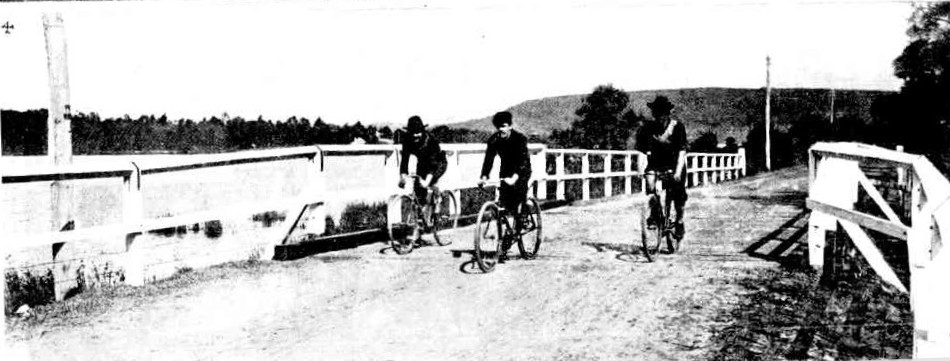
4. At Narrabeen.
THE MANLY-PITTWATER CYCLE PATHS. (1901, August 24). The Sydney Mail and New South Wales Advertiser (NSW : 1871 - 1912), p. 479. Retrieved from http://nla.gov.au/nla.news-article165234777
Round Sydney - BY Motor Car - A Trip To Newport: 1904 Sydney Mail Article
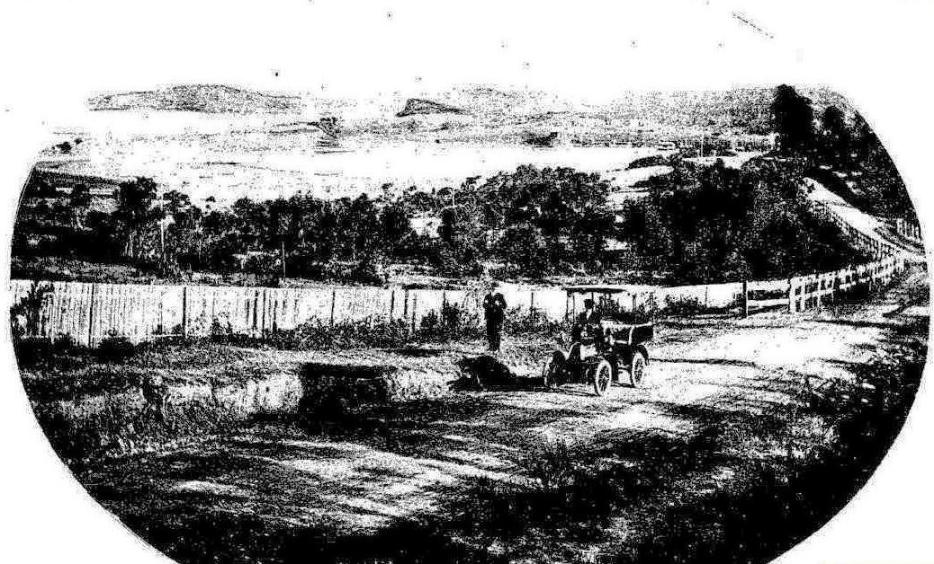
THE PITTWATER VALLEY.
Round Sydney - BY Motor Car- A Trip to Newport.
THE motor car is a luxury for the comparative few. In Sydney the delights of yachting have been vouchsafed to many who could never have experienced them otherwise by co-operative ownership and by hiring. Messrs. Thomas Cook and Sons, the well known tourist agents, whose Sydney branch is in Hunter-street, guided by the success of the motor service to the Jenolan caves, have decided to make a motor drive equally accessible to all. They have arranged for motor trips around the most attractive routes about Sydney— and no other city possesses so infinite a variety —on very moderate terms, which afford to the motorless resident an opportunity of showing new hospitality, and to the visitor a delight hitherto difficult of attainment. It was for one of these trips — Sydney to Newport, via Manly — that our representative last week accepted an invitation, and took with him a ''Mail' photographic artist.
The stretch of coastal country between Manly and Rock Lily, and thence along to Newport by one road and Bayview by another, is justly esteemed to afford one of the most beautiful drives of its type in Australia —many go further, and declare it to be one of the most beautiful in the world. When to this is added the strip of country between North Sydney and Manly, with its magnificent glimpses and panoramas of the lake-like waters of Middle Harbour, and of Sydney Heads, there is comprise d within the day’s outing a series of pictures for which we can only seek rivals in the world-famous portions of the Mediterranean coasts. And here we have characteristic elements of beauty either lacking there or possessed by us in a higher degree.
The popularity of the bicycle made familiar to thousands, who would not have otherwise seen them, these beauty spots. Others have driven or used the coach services. But the ideal method of seeing this beautiful stretch of country and spending a thoroughly enjoyable 'open-air' day is by motor car. There is no questioning the fascination of automobilism. The man who has not a car may effect to disparage his more fortunate neighbour who has, and may make satiric remarks as to the latter’s misadventures in his initiatory stages. He may jibe at 'stink pots,' at dust, at the odour of petrol, and the rest — all these are for the man who stays behind, not for the man in the car. And for the man in the car there is the glorious sense of speed controlled at will, the bounding freedom of the rapid moving automobile, the easy run up the hills that have hitherto been toilsome trials to his horses, the grand rush of speed on the level stretches, the flight as through space against the keen breeze. All this produced by a turn of the wrist, and all comprising a sense of exhilaration and of power almost intoxicating in its delights where, as on the routes chosen by Messrs. Cook, the roads are good and the scenery is delightful.
Our car, a 9-h.p. De Dion, piloted by an expert driver, set out from Messrs. Cook's office, on a delightful day of last week — bright, clear, sunny, with a light cool breeze. It was threaded skilfully through the traffic over the wood blocks to the North Shore horse ferry. Landed on the other side, we ran easily up the long hill to Ridge street, and thence fairly flew along the level roads on the heights, with their superb outlook, to the Spit ferry, experiencing a preliminary taste of what a motor can do when the road is free and good. Here and there a stop was made to take a photograph.
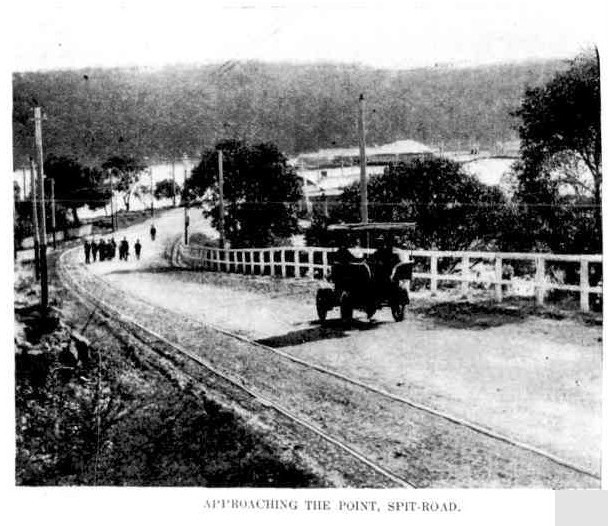
APPROACHING THE POINT, SPIT-ROAD.
Across the Spit ferry, and again we set out up the picturesque winding road on the Manly side, along the crest past many spots of interest. We passed a dwelling where the two coiners were wont to practice the revolver shooting which they ultimately used upon policemen. As we went, every turn of the wheels seemed to open out a fresh aspect, each more insistent than the last, in its claims to consideration. Down the Red Hill, past 'Dalley's Castle,' and that most picturesque of kirks, the Manly Presbyterian Church, and after a brief pause for refreshment, our driver turned him on that coastal stretch to Newport, which lives in the memory of all who have ever seen it.
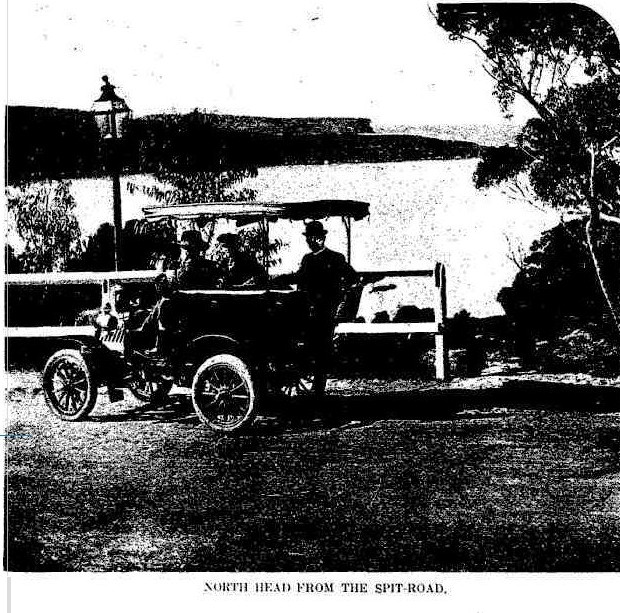
NORTH HEAD FROM THE SPIT-ROAD.
The pictures on this page will give some idea of the glories of the whole trip, but no mere black and white can suggest the wealth of colour and the atmosphere which are the most exquisite elements in the scenes themselves. There is every type of waterscape —Smooth beaches in Middle Harbour, with the gently rippling marge of lake-like waters, shimmering in the sunlight or giving back amore intense blue than even the blue of the Australian sky. Lagoons at Curl Curl and Deewhy, the waters running in among the thickets on the banks, and the trees mirrored oil their surface. The forest-bound lake at Narrabeen; great stretches of white and grey and yellow beaches along the long line of ocean front from Manly to Barranjoey.
Rushing surf breaking upon the sands, surging over the rocks at Long Reef, dashing on the cliffs of each bold headland that breaks the beach line till they are mist enshrouded with the rising spray. And for landscape, nearly every variety but the Alpine. The Middle Harbour heights give glimpses of the picturesque suburbs that are generically termed Mosmans, with their red roofs and constant effort at the picturesque in architecture from cottage to mansion — an effort often crowned with success. The sunlit bush and verdure-cinched hills set in opalesque waters as the run down the Spit-road is made. There is the charm of Sydney's only 'village' when Manly is reached: and then along the road to the far famed Hawkesbury at Pittwater — only the brush of the inspired artist and the pen of the true poet could convey adequate idea of that.
Take one scene alone. The view from the Newport hill looking south across Mr. Brock's estate, and on over Rock Lily to the bold hills and headlands about Narrabeen. Here the great master of artistic composition, Nature, has made a masterpiece. Look at the photograph as it is reproduced — and it has some of the defects inherent in even the best photograph in its accentuation of the line of fencing. But take the picture as a whole— the long stretch of road across the foreground and to the right carrying the eye away with its admirable perspective. In the reality the road banks have red and rich yellow tints: above them the blackberry bushes run riot in autumn colouring; across the fence the rich dark greens and browns of the bush throw and the bright greens and light yellows of the neat pastures beyond. Lagoons, like opals in a golden setting, more trees, green hills, dark distant bush on the n-ht and in the centre. And on the left the white beach with its whiter fringe of ever-moving surf, a sapphire sea, a towering, bold, brown cliff. Above all the vivid blue sky and the whole landscape bathed in the rich light of an Australian winter day's sun that glorifies all it touches. A mere catalogue of forms and colours, you say? Yes, but the reality is exquisite, and it is only one of a long series of beautiful scenes along a beautiful road. Near where we stopped to take the photographs one of the great army of cyclists to whom every inch of the way is familiar, lay under a tree conning a little volume. It was Omar. The cyclist had realised his tree and his flask of wine, and 'thou'? Possibly she, too, might have materialised had we waited — he was evidently waiting — or perhaps his wheel was his love. At least the Rubaiyat seemed peculiarly suited to the setting. That, the Persian poet would have revelled in — even plus a bicycle and motor car. As we bowled gaily along the smooth surface with the free swinging motion of the motor car at speed, at every turn in the road came the suggestion that the photographer should get down and ''take that.' The car must have been laden with photographic plates had a tithe of the suggestions been adopted. Yet each was fully justified by the special aspect of the moment.
Take the Narrabeen lake, for instance, with its surface still and every stem and bough reflected It is charming even from the roadside, and when that is left and by boat the visitor rows in among the bold hills with their adornment of splendid forest trees the wonder is that though thousands visit it in the year, and hundreds go upon its waters, the number is not many scores of thousands- We go far to see lake scenery any finer. Then take the stretch of forest road running down into Rock Lily with the hills beyond. That is exquisite. And on the coast from Newport to Barranjoey there are scenes rivalling the famous Illawarra coastal scenery — smooth buffalo-grassed slopes and flats, bush-crowned hills, tropic luxuriance of palm, towering cliffs, shell-strewn beaches, and always crowning beauty— sea and sky.
As for Pitt water (which term includes the lovely Bay View), that would require a chapter to itself, and then its beauties would not be adequately described. All that visitors, distinguished or undistinguished, have written as to the glories of the Hawkesbury applies in an accentuated form to its Pittwater arm. Here we have the bold and graceful hills, palm-clad slopes, fern gullies rivalling the great fern gullies in the Dandenong ranges, of which Victorians are so proud, fjord-like waters, recalling Norway or New Zealand, and the splendid stretches of that noble reserve, the Kuring-gai Chase, accessible only rowing boat or launch 'obtainable on the spot- It is not surprising that Sydney people — Professor Anderson is a notable instance — are establishing summer homes for themselves here, where all is peace, and Nature has lavished her richest gifts of soil and water, climate and scene — the gardens and such orchards as those of Mr. Roche show the fertility of the soil. And there is this added attraction about the whole district we have been endeavouring to suggest, everyone has heard of the particular portion of the anatomy upon which an army is held by high military experts to travel — sometimes (when bullets fly) in a literal- but always in a metaphorical sense. J. M. Barrie last year invented for it a new euphemism. On the road from Manly to Pittwater, and at that lovely Hawkesbury arm, 'Little Mary' is well catered tor at every stage. There need be no anxiety as to commissariat, even when the hamper has been forgotten in the eager zeal of the motorist to 'get her going.' As for our car, it did its work, guided by the driver (J Cunningham) admirably. Since then it has had a run up to Moss Vale, whence it returned comfortably in five hours.
Round Sydney. (1904, June 29). The Sydney Mail and New South Wales Advertiser (NSW : 1871 - 1912), p. 1628. Retrieved from http://nla.gov.au/nla.news-article163988582
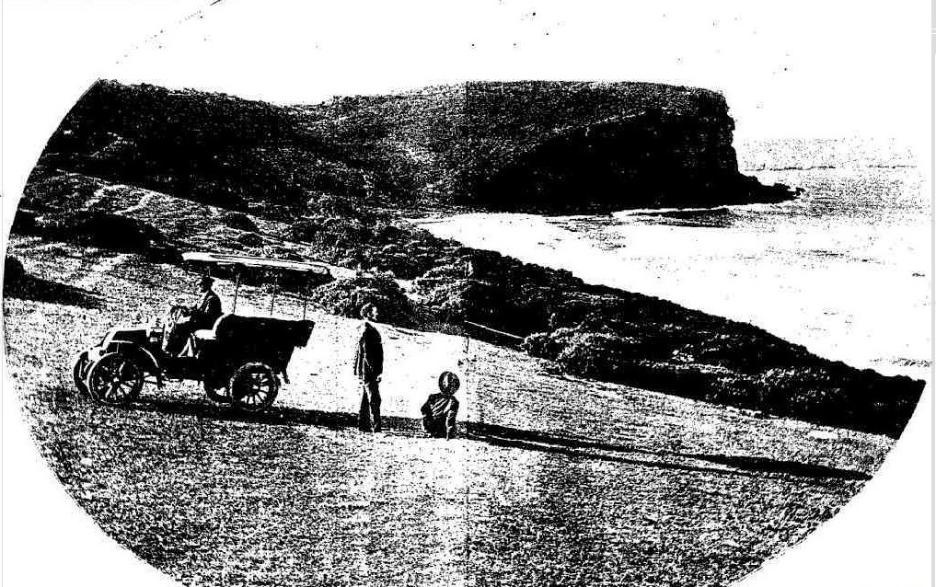
ON THE COAST AT NEWPORT.
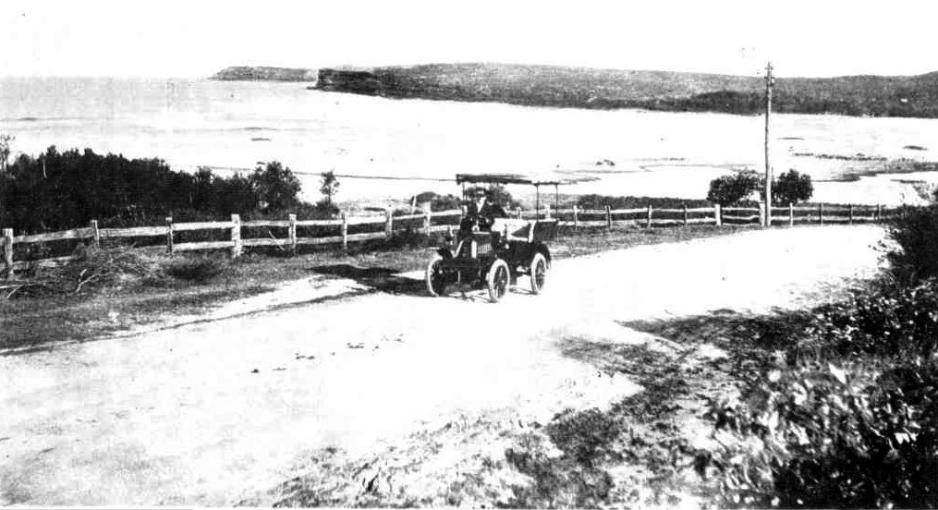
ONE TREE HILL, CURL CURL (SEVEN MILES MANLY).
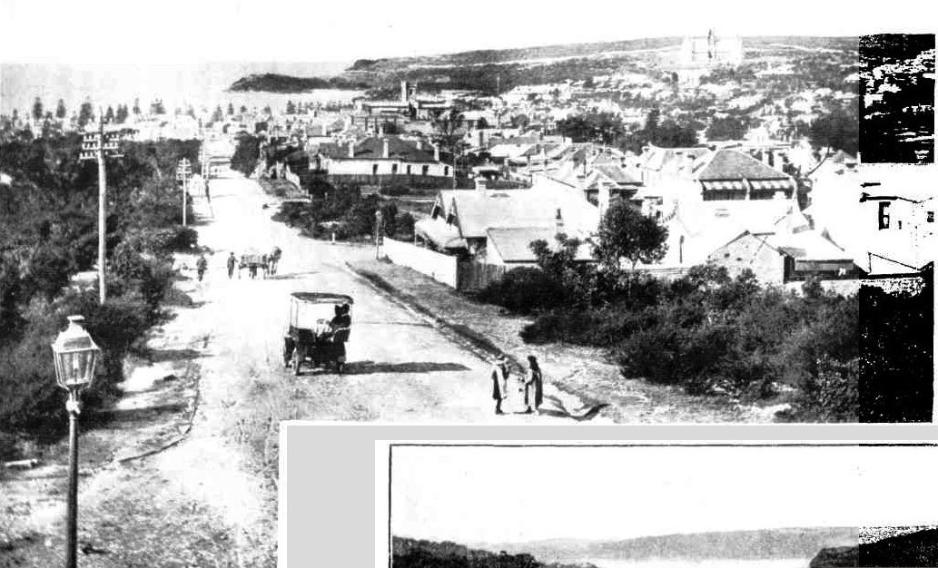
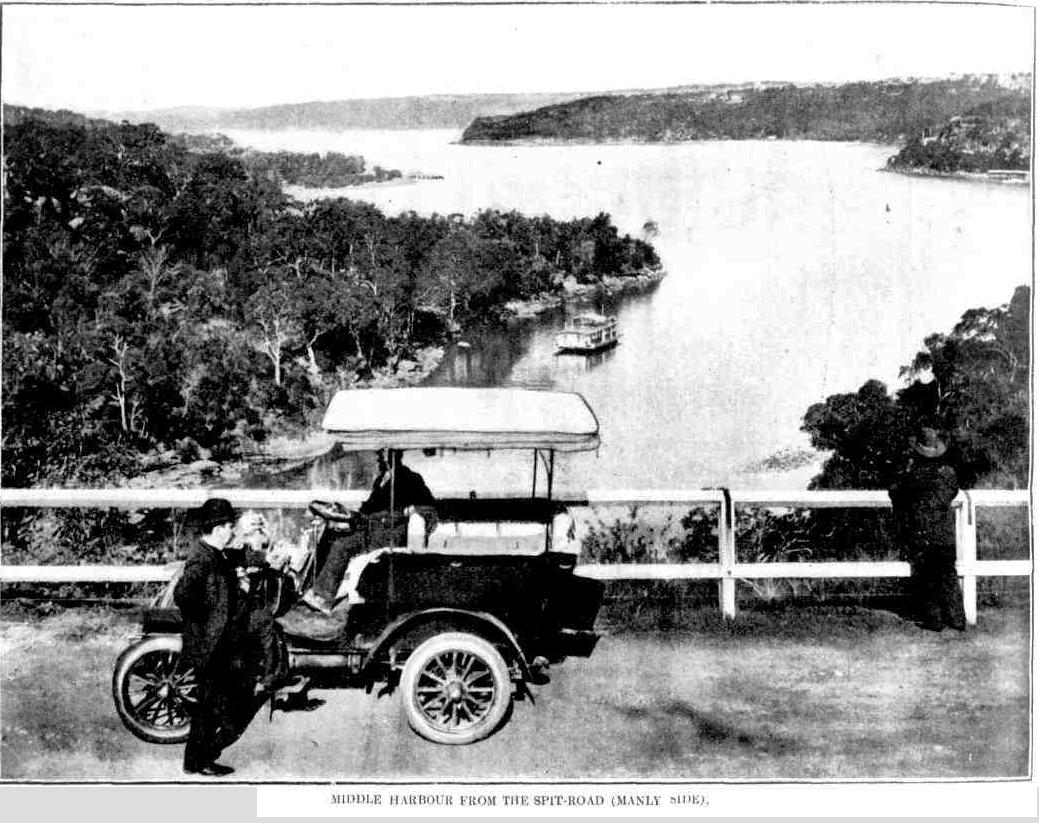
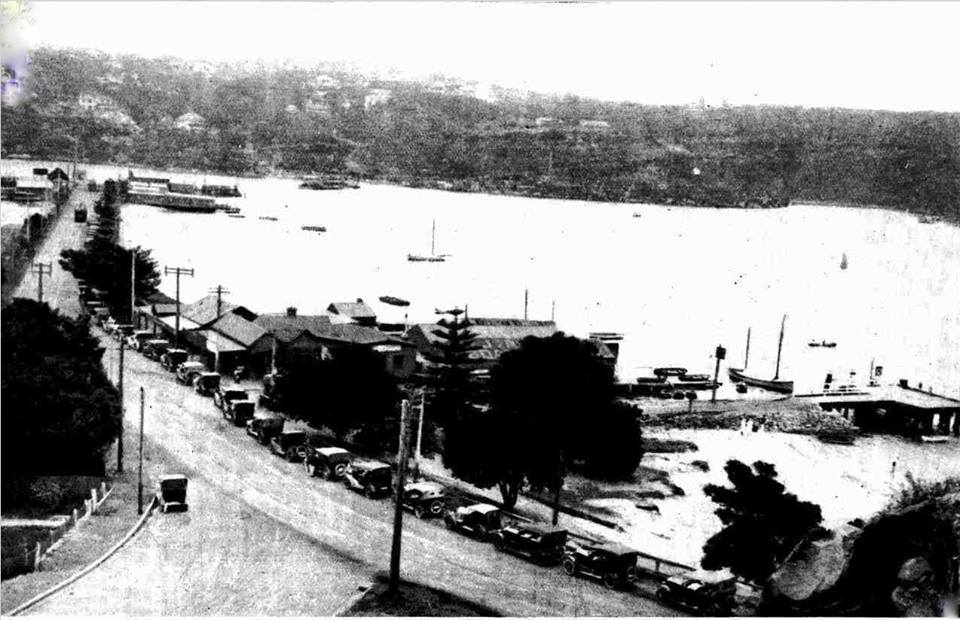
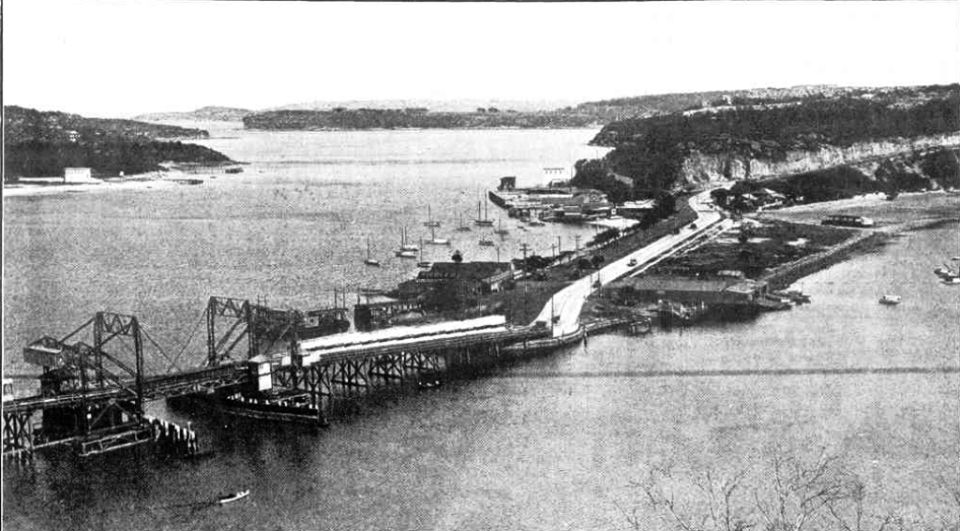
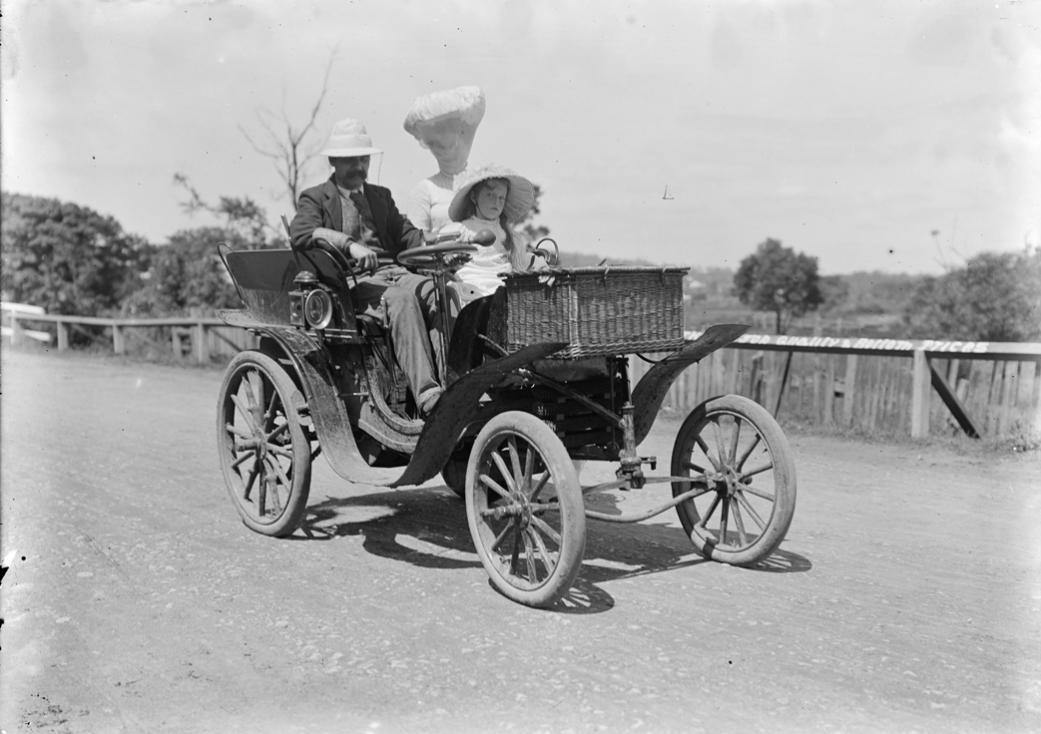
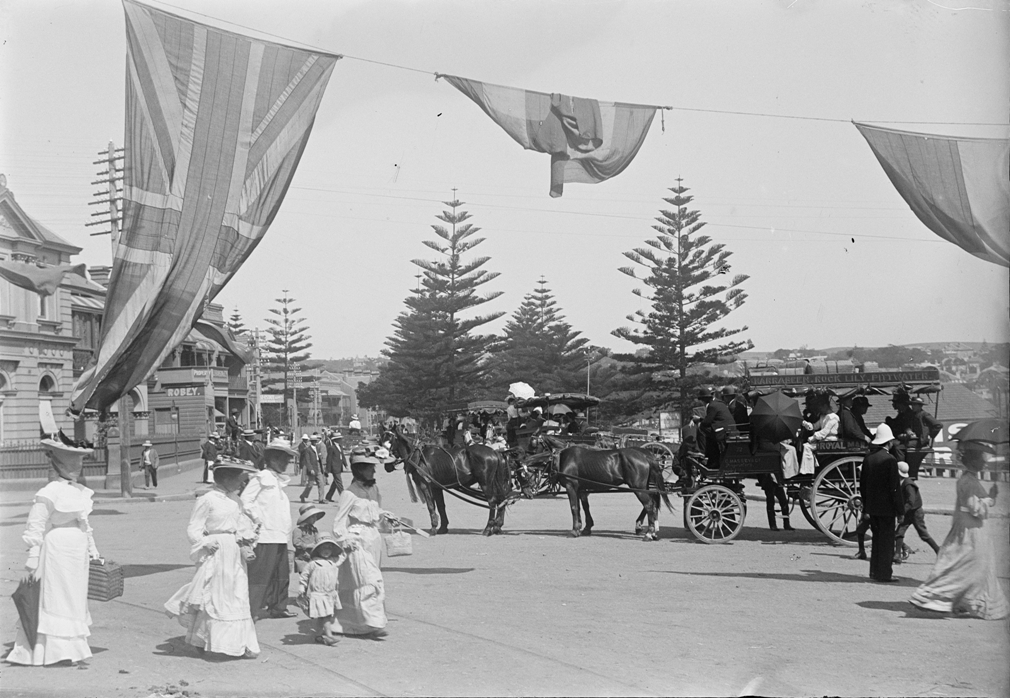
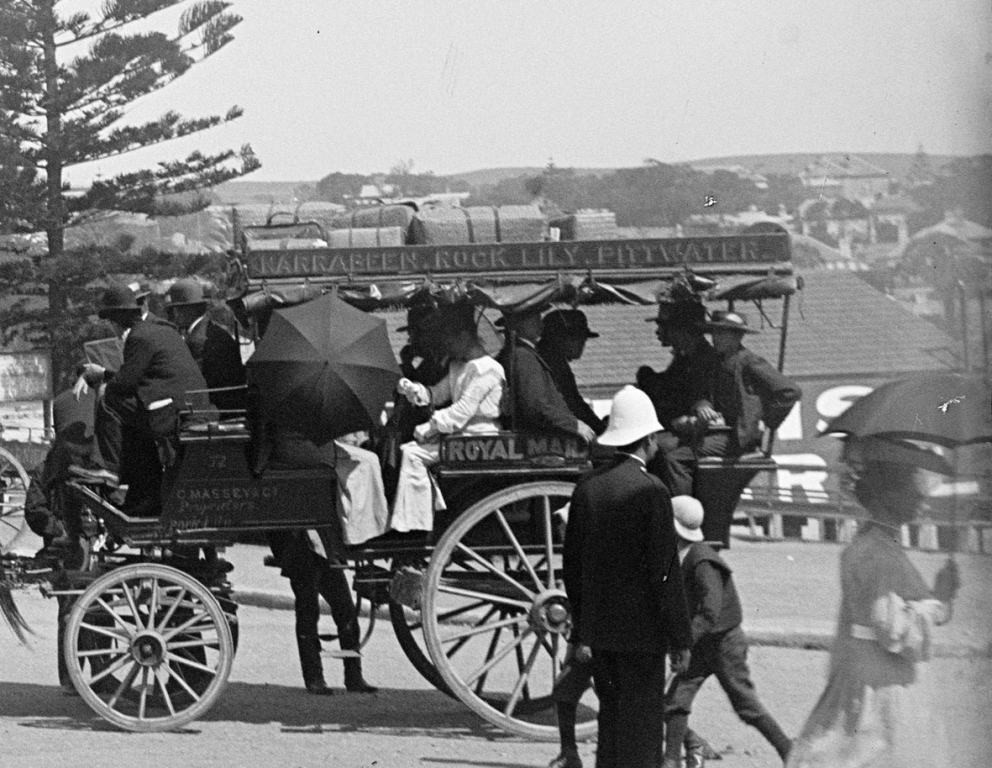
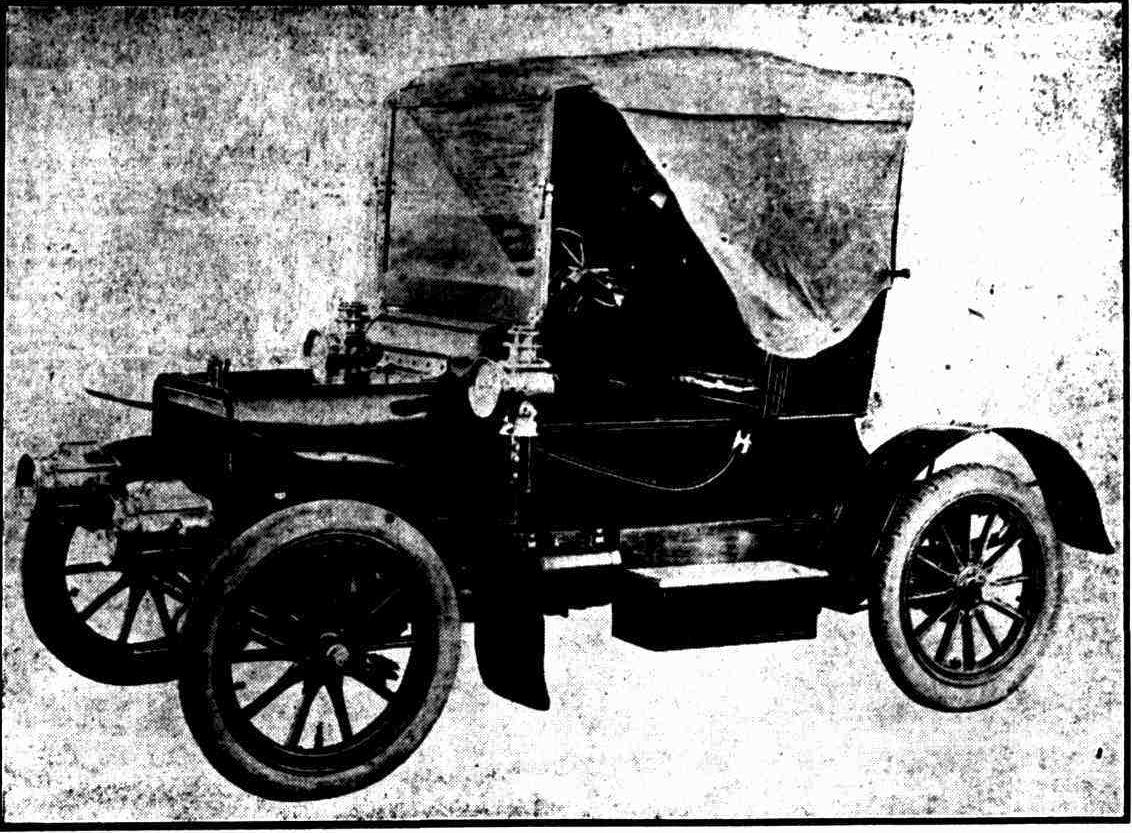
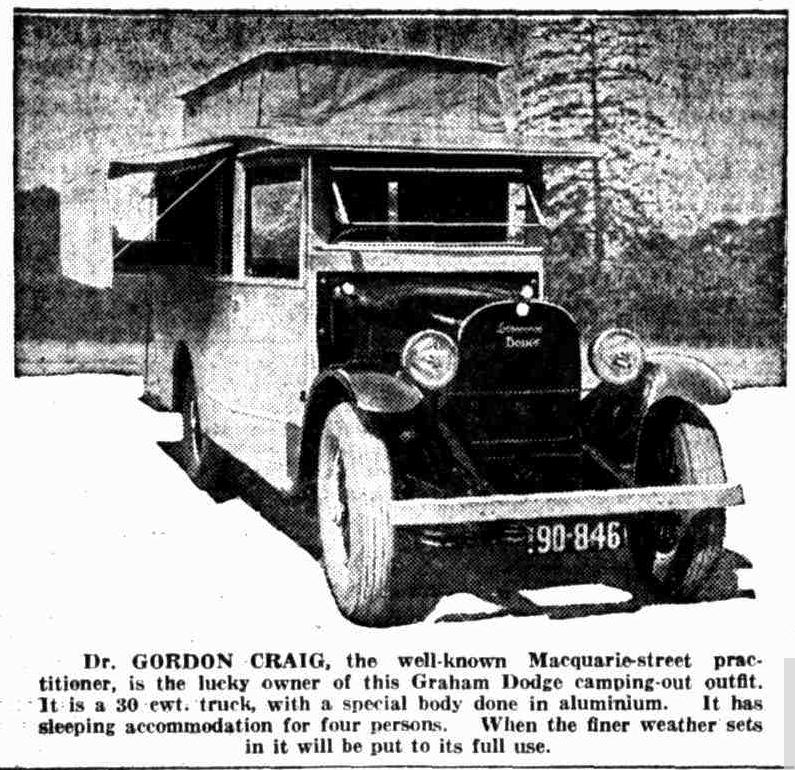
Dr. Craig's daughter Ailsa was not only a proficient driver but an early female pilot:
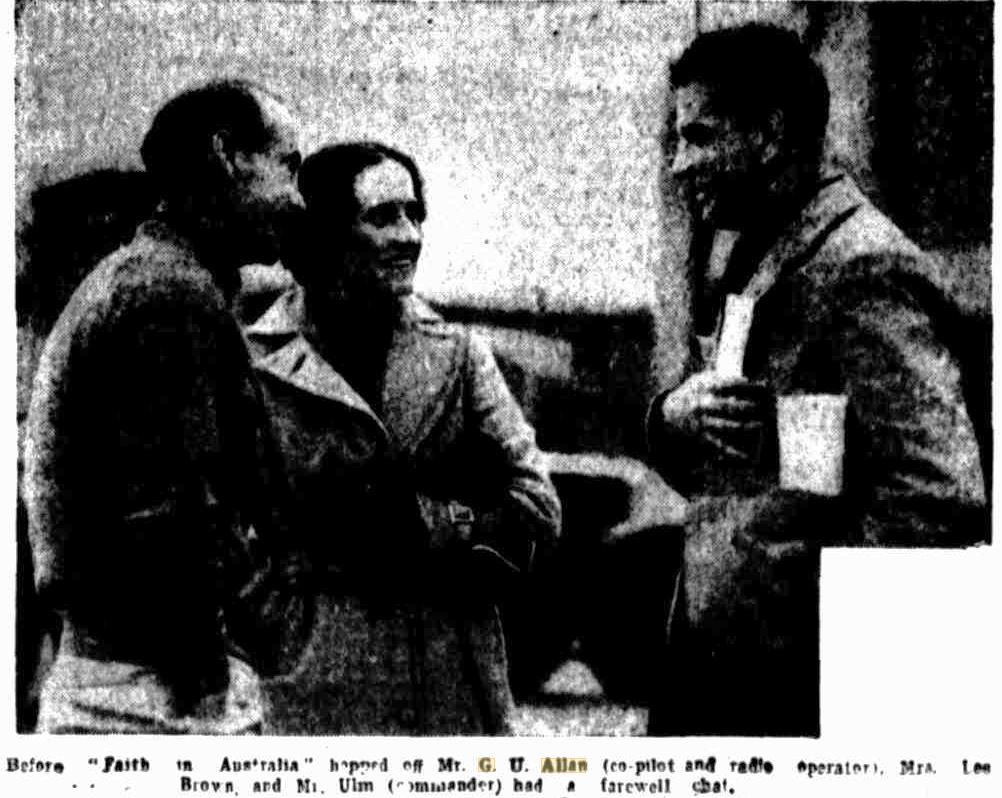
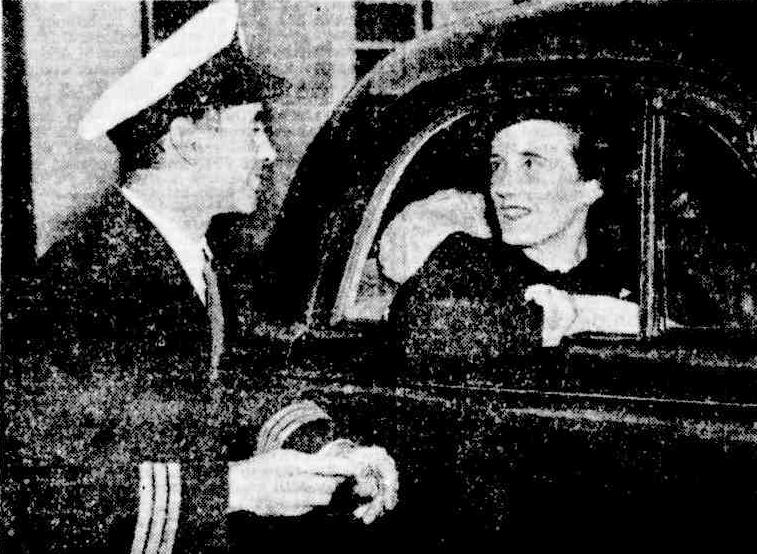
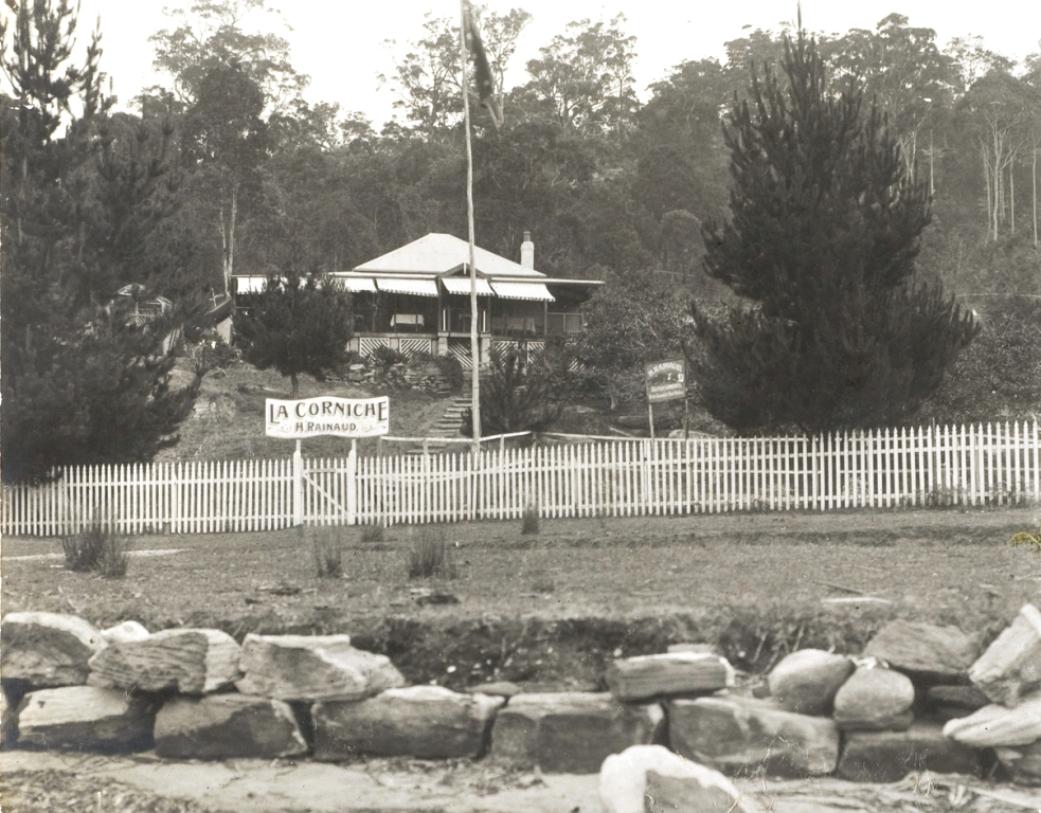
From The Mort Family Album, Image 131. H.Rainaud's restaurant La Corniche, Digital Order No. a1780131, from State Library of NSW: A note scribbled at side of this photograph says " Renaud - after his Restaurant in Macquarie Street - Morts Rooms-Chambers'.
Visit: La Corniche - Bayview
Allen Family at Bayview-Church Point on Sunday 10th of October 1909
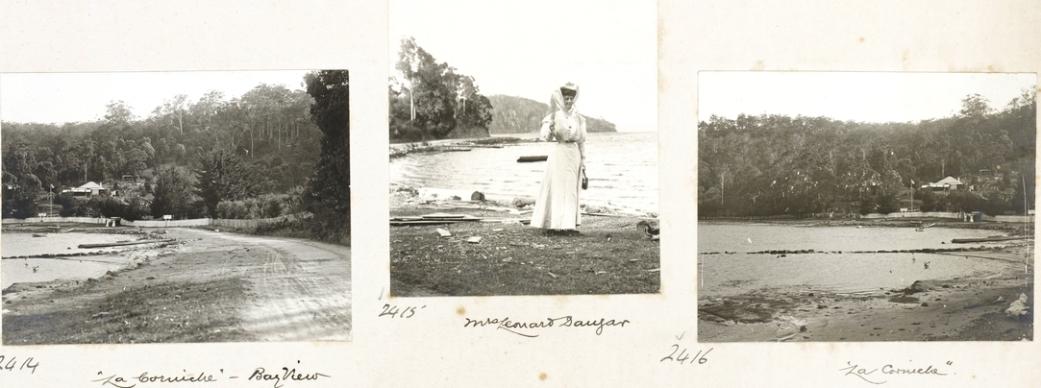
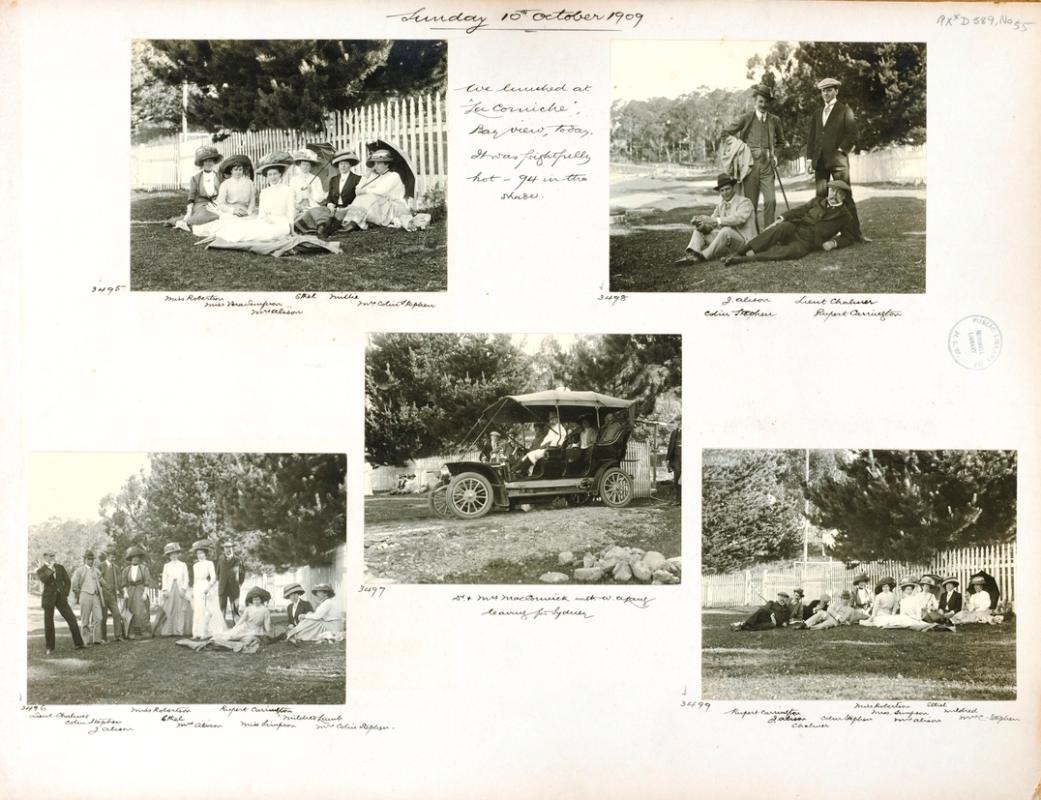
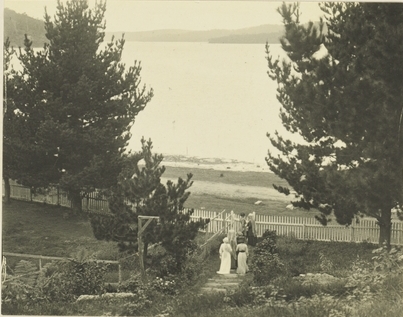
Sunday 5th of February 1911; 'Leaving La Corniche'; from Album 56: Photographs of the Allen family, 1 December - 30 April 1911. Courtesy State Library of NSW.
.jpg?timestamp=1355212682889)
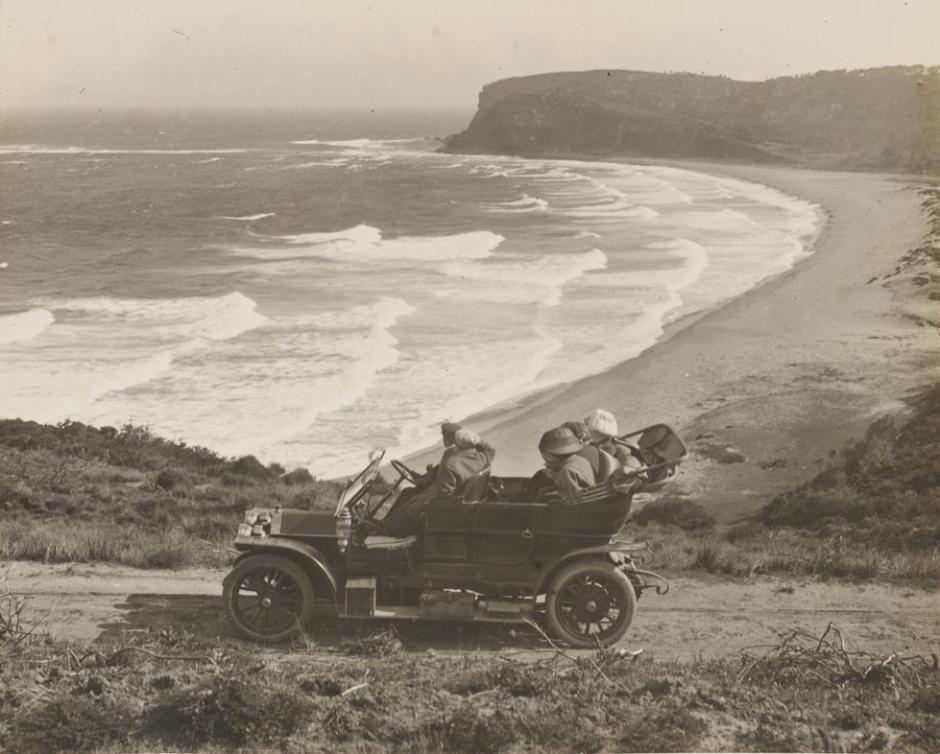
'The Beach just beyond Newport' - November 21st, 1909 - from Allen Family Albums: Album 52: Photographs of the Allen family, November - December, 1909 Image No.: a1373015h courtesy State Library of NSW
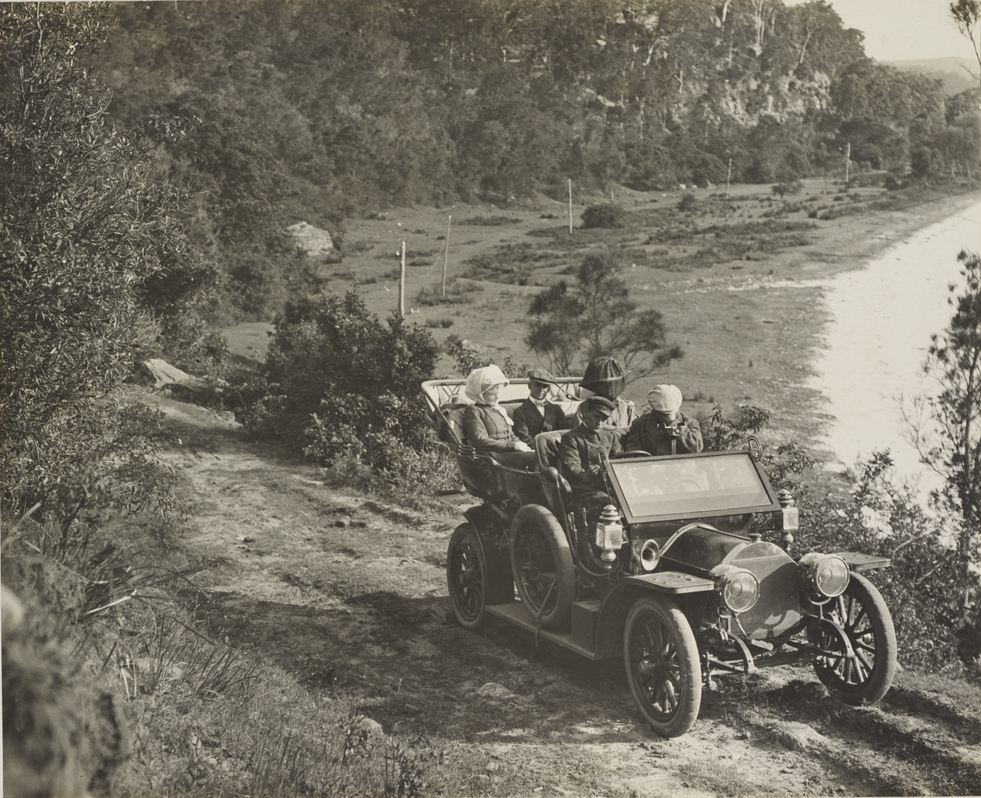
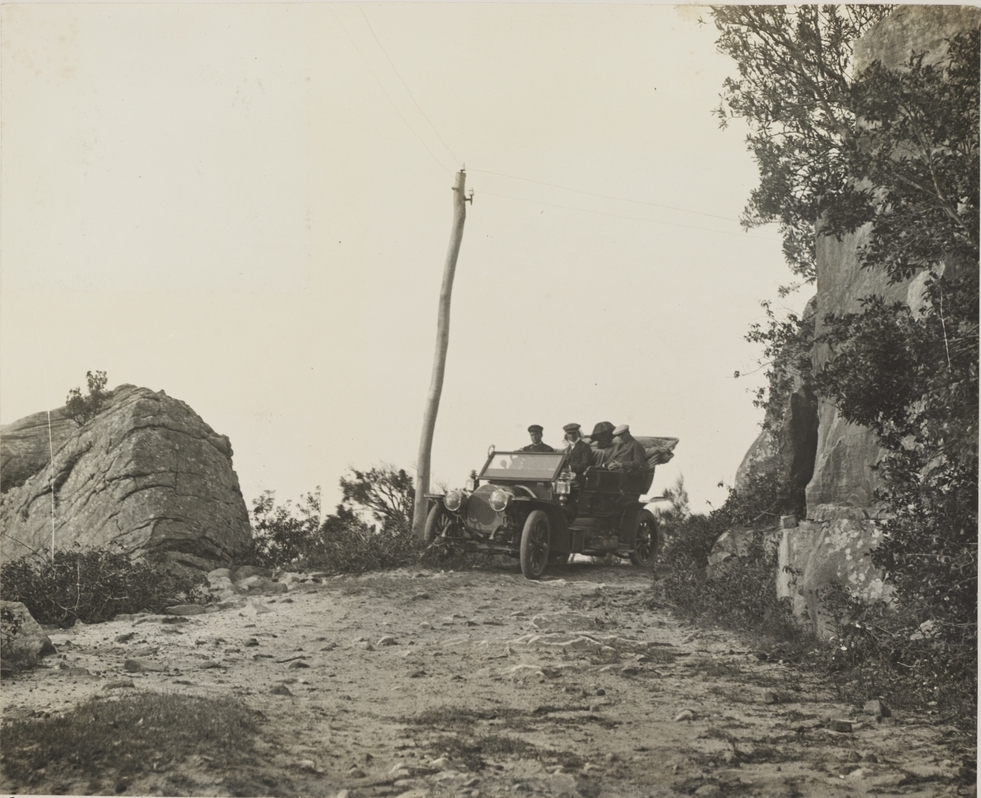
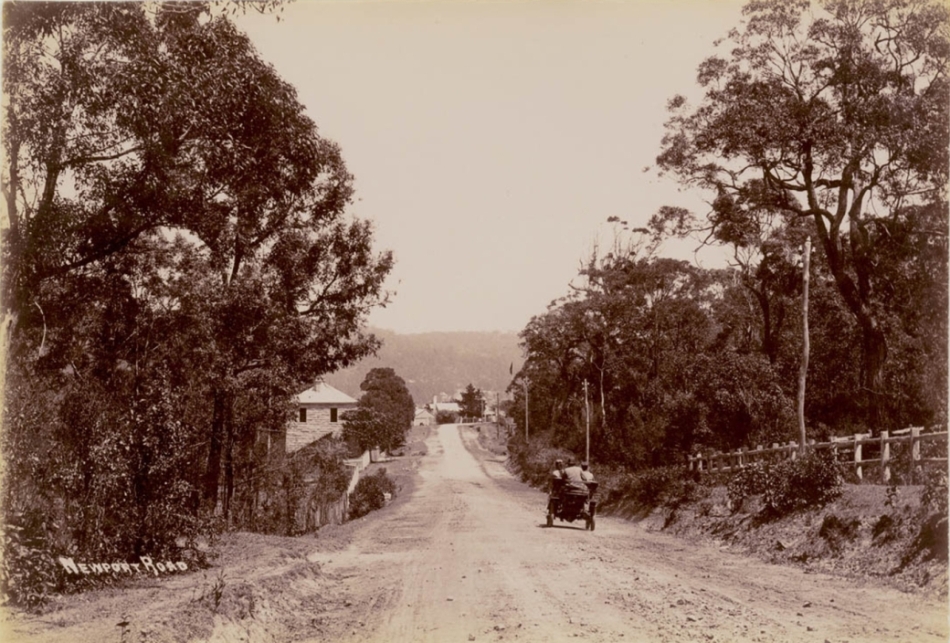
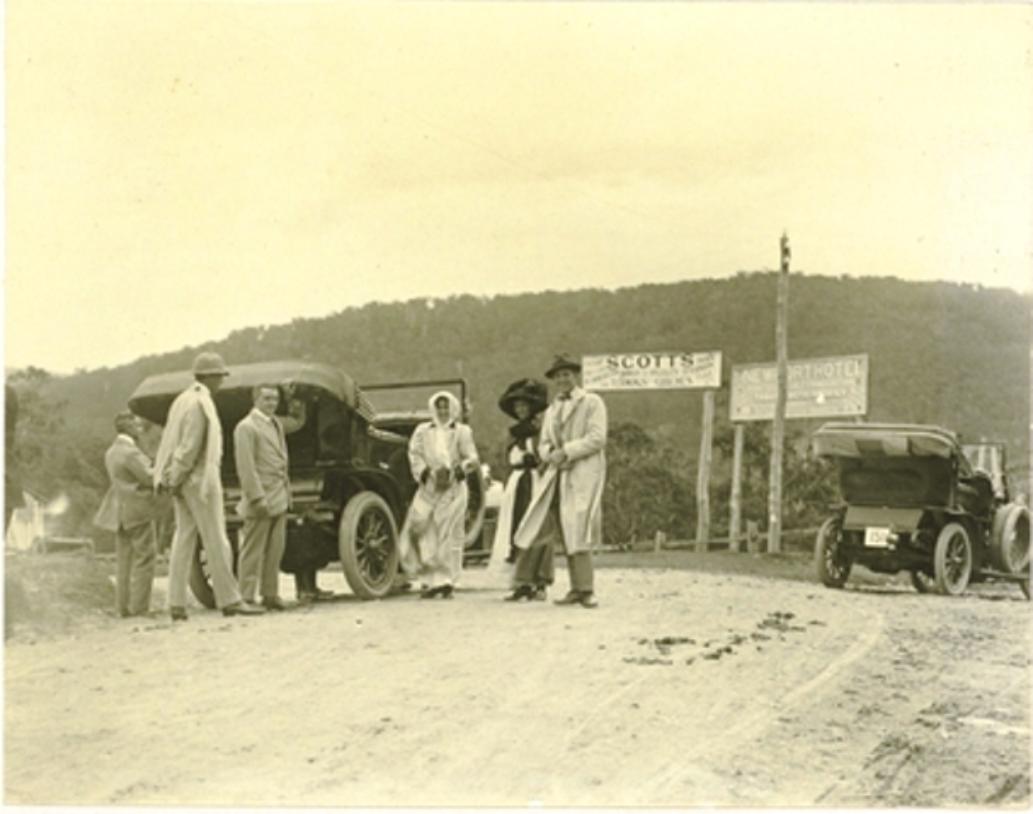
Above: Scotts Hotel Sign: Sunday 5th of February 1911, Top of Newport Hill, from Album 56: Photographs of the Allen family, 1 December - 30 April 1911. Image No: a3288031. Courtesy State Library of NSW. Visit; Collin’s Retreat, Bay View House, Scott’s Sanatorium, Guest And Boarding House: Crystal Bay, Newport
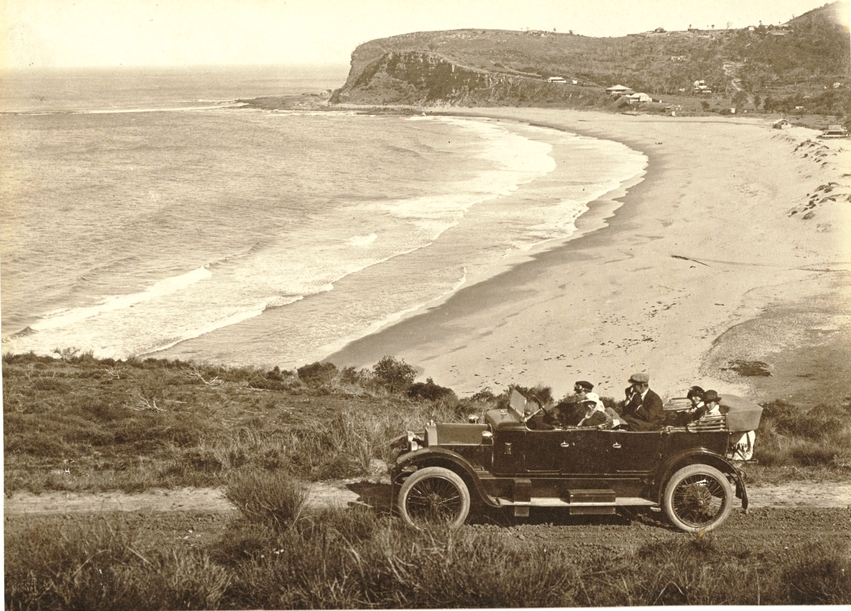
Above. Newport August 1916. Pic a3295024h, Courtesy State Library of NSW. Below: Bilgola Cottage. 1900
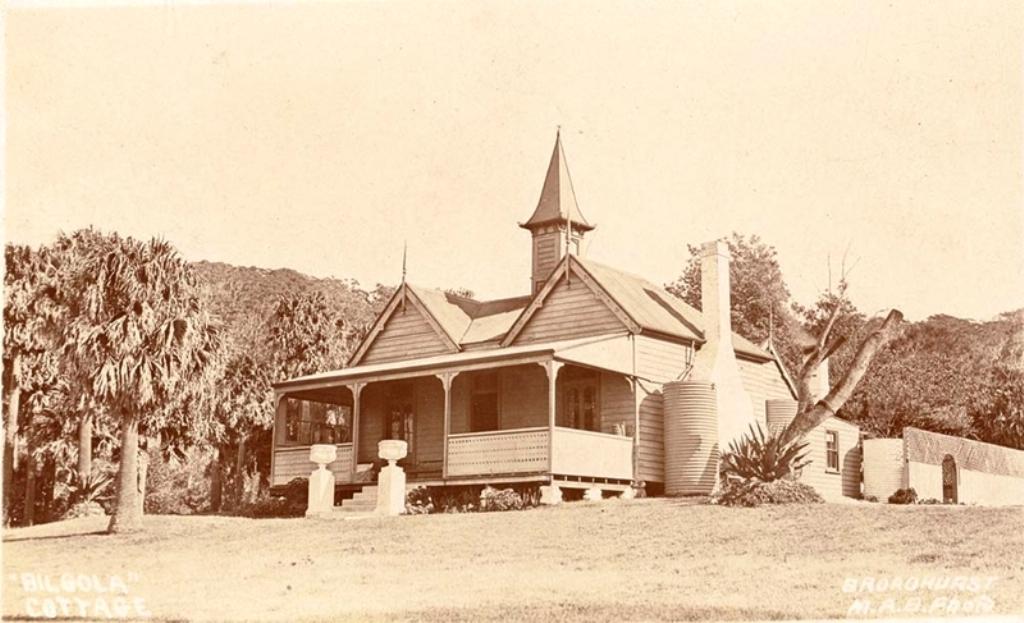
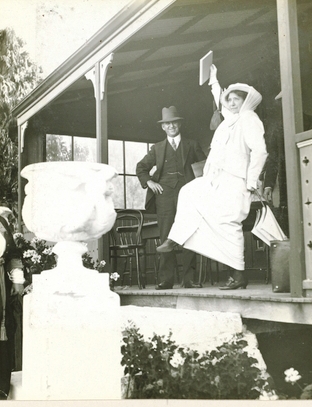
'Madame Melba with John Lemmone' Picture a3293015, Courtesy State Library of NSW
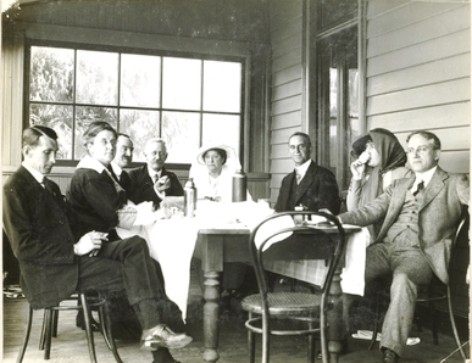
Above: Balcony photo of(from left): George Armstrong, Mrs Hugh Ward, Mr Chalmers, AW Allen, Madame Melba, John Lemmone, Mrs Armstrong, Hugh J Ward. Pic No: a3293014h Album 64: Photographs of the Allen family, 23 August 1914 - 7 March 1915 , courtesy State Library of NSW.
Called Australia’s First Diva, Dame Nellie Melba, had a long association with the Allen Family of Sydney who were highly cultured and enjoyed cultivating and entertaining the who’s who of Sydney Society. Many in the family became lawyers. On Wednesday 23rd of September, 1914 ‘Madame’ Melba as she was referred to by Arthur Wigram Allen, went with the family and others to visit and explore Bilgola beach. They were entertained ‘at lunch’ lavishly and spent the afternoon exploring the grounds and beach. Dame Nellie was accompanied by Mr and Mrs H Ward, (H J Ward had taken over the management of J C Williamson’s entrepreneurial entertainment firm on that man’s death in 1913. Melba had established the Melba-Williamson Opera Company in 1910), and her business manager, flautist John Lemmone. It would have certainly been an august party given whom attended. Visit: Dame Nellie Melba Lunches at Bilgola Cottage

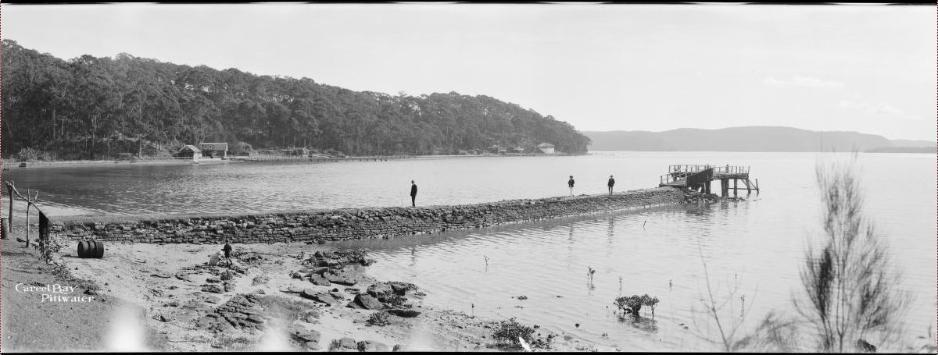
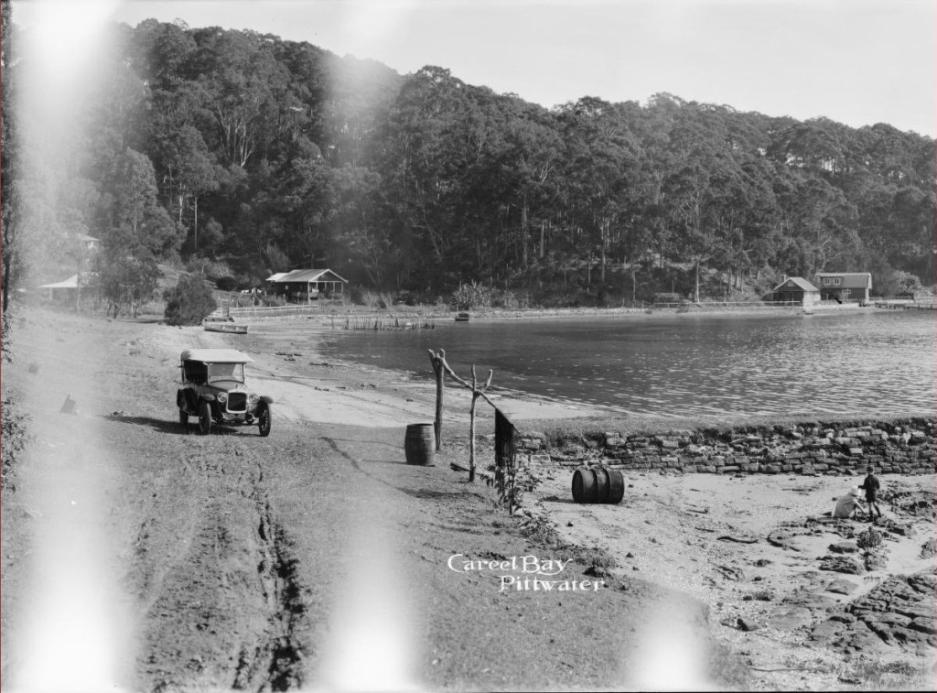
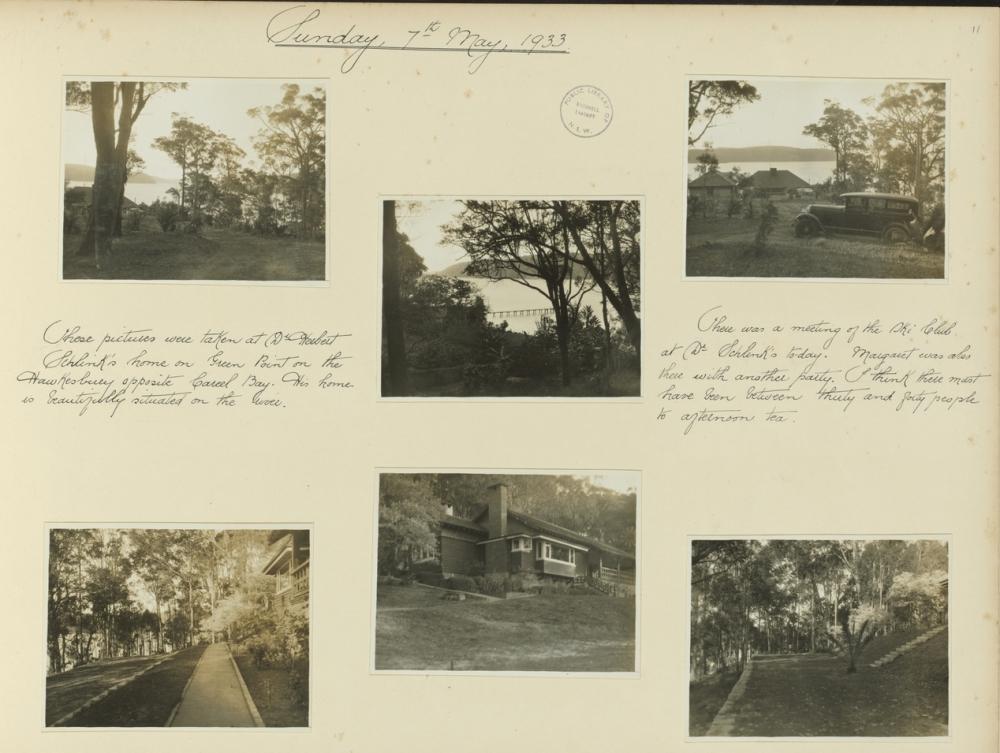

Above and Below: Panorama of Mona Vale, New South Wales, ca. 1917-1930 [picture] / EB Studios National Library of Australia PIC P865/125 circa between 1917 and 1946] and sections from made larger to show detail.
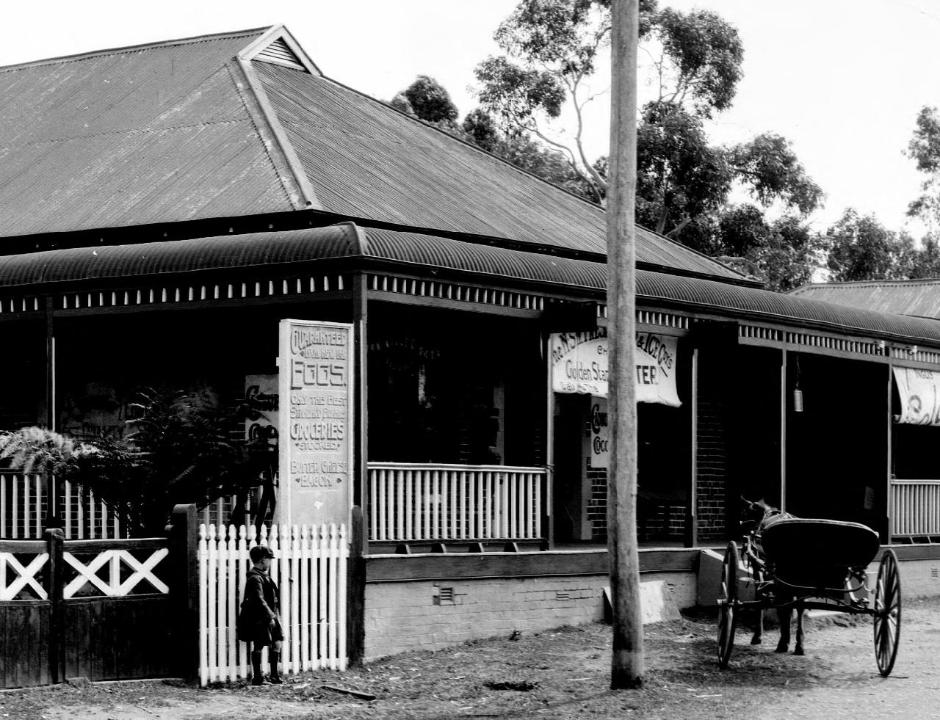
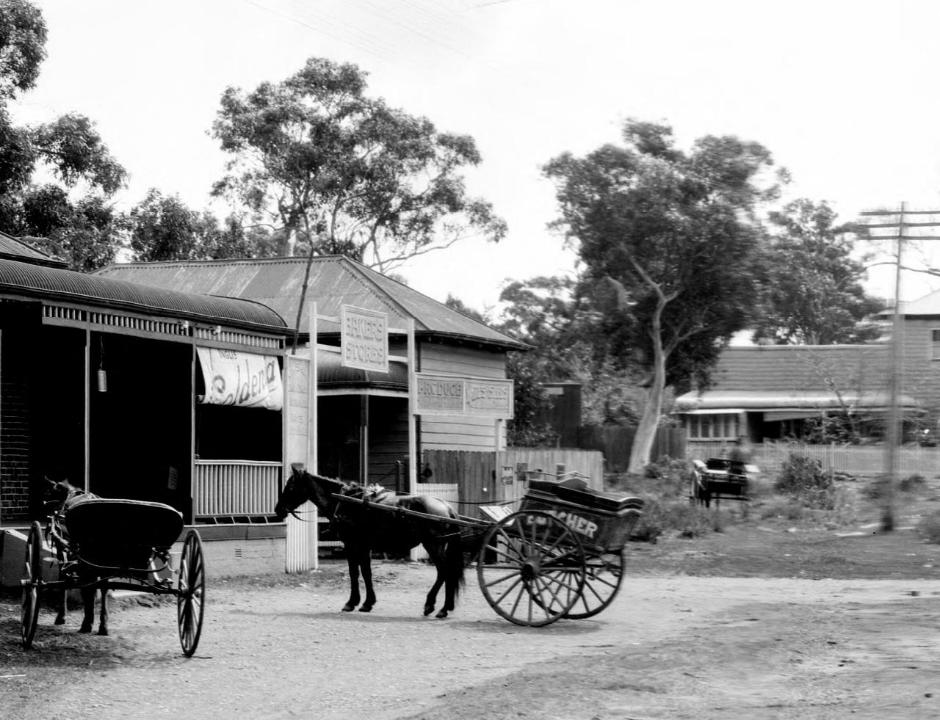
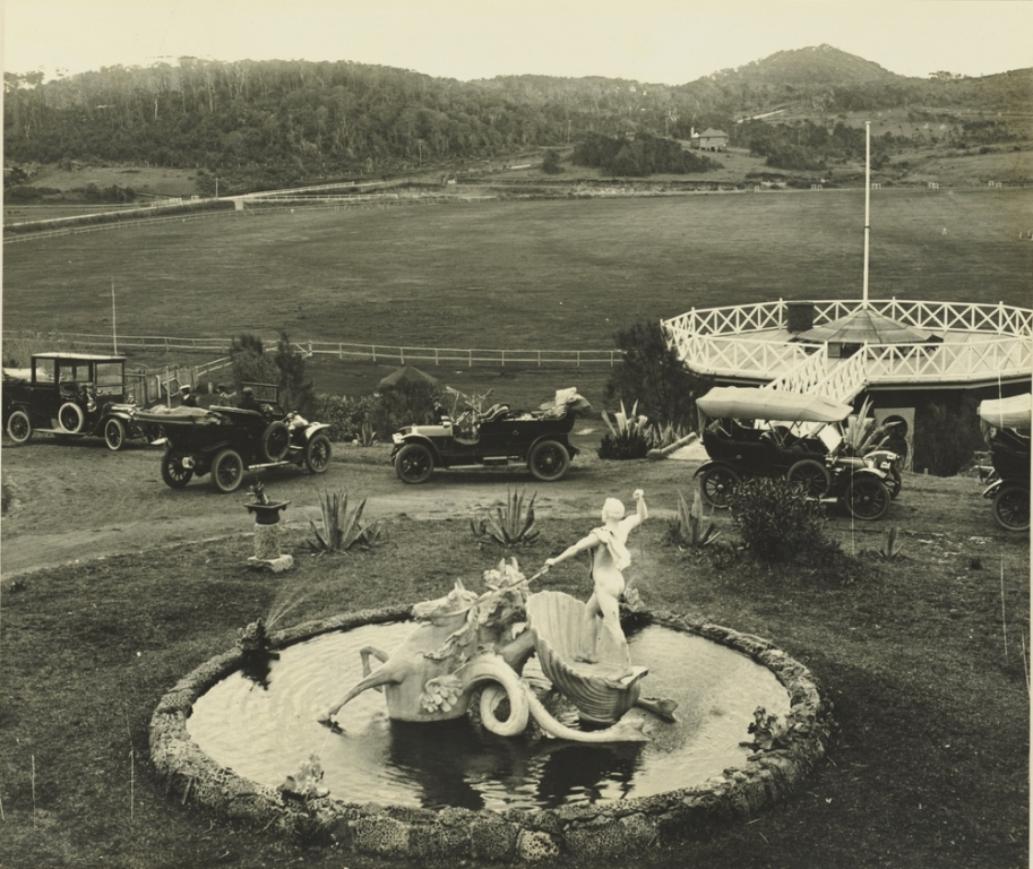
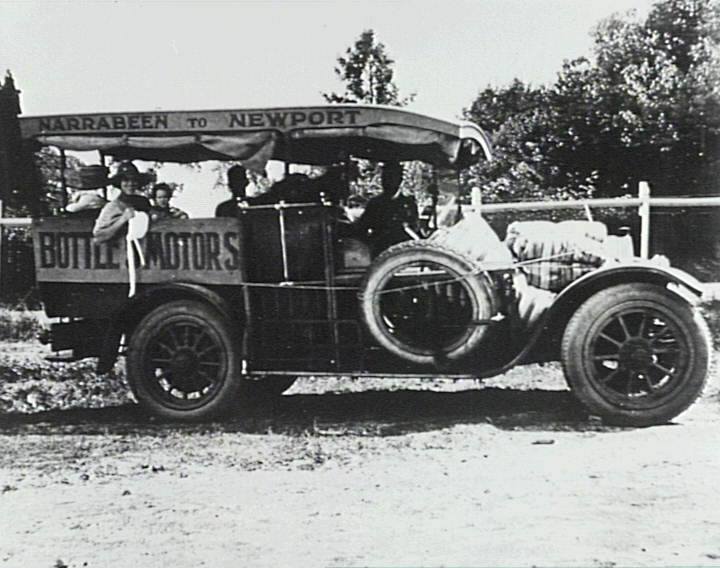
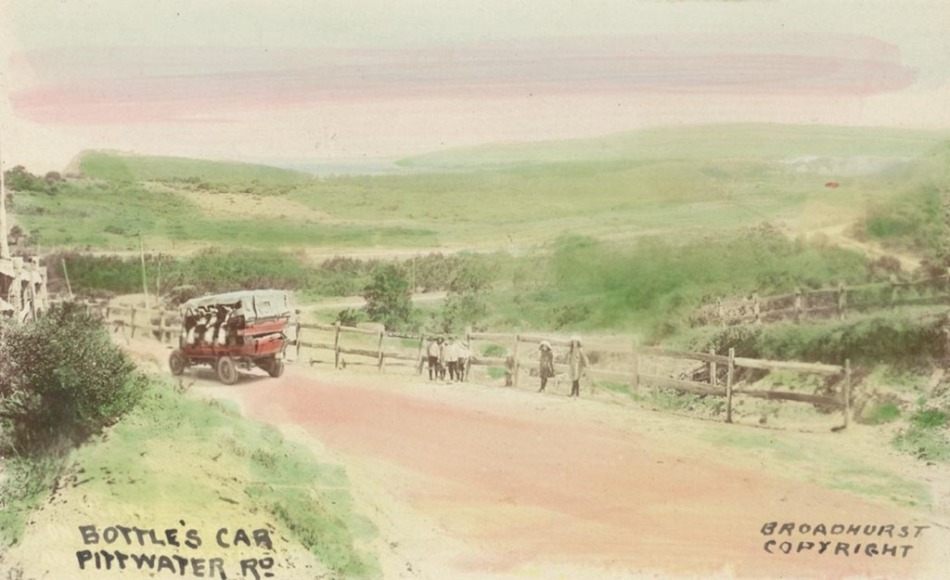
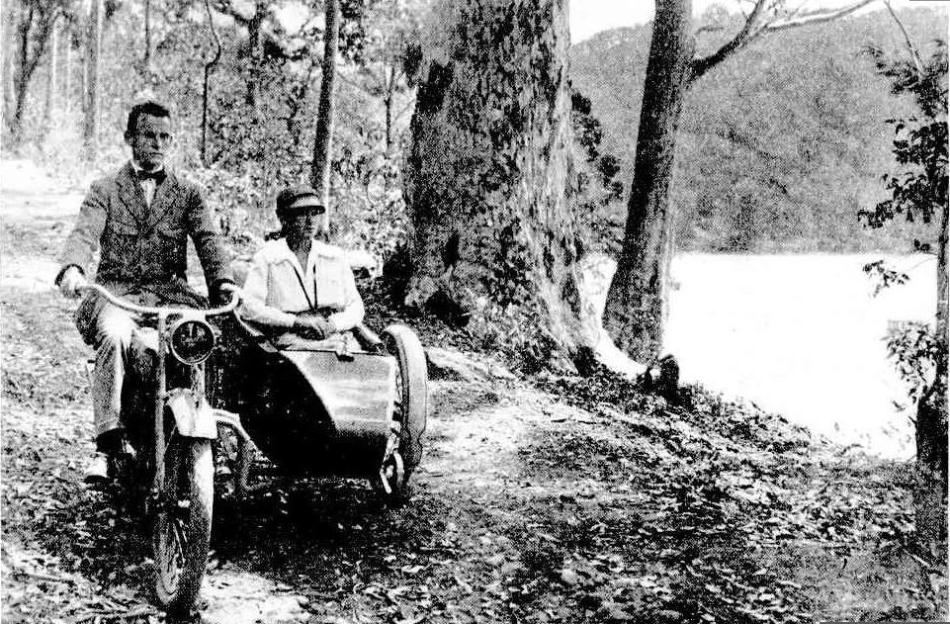
Along the foreshores of Broken Bay - 1918
The photograph was taken at Bayview, which overlooks lovely Pittwater, the southern part of Broken Bay into which runs the beautiful Hawkesbury River . The whole of this locality is wonderfully rich in scenic charms. ALONG THE FORESHORES OF BROKEN BAY. (1918, January 23). Sydney Mail (NSW : 1912 - 1938), p. 5. Retrieved from http://nla.gov.au/nla.news-article159026429
AT NEWPORT ON BOXING DAY.
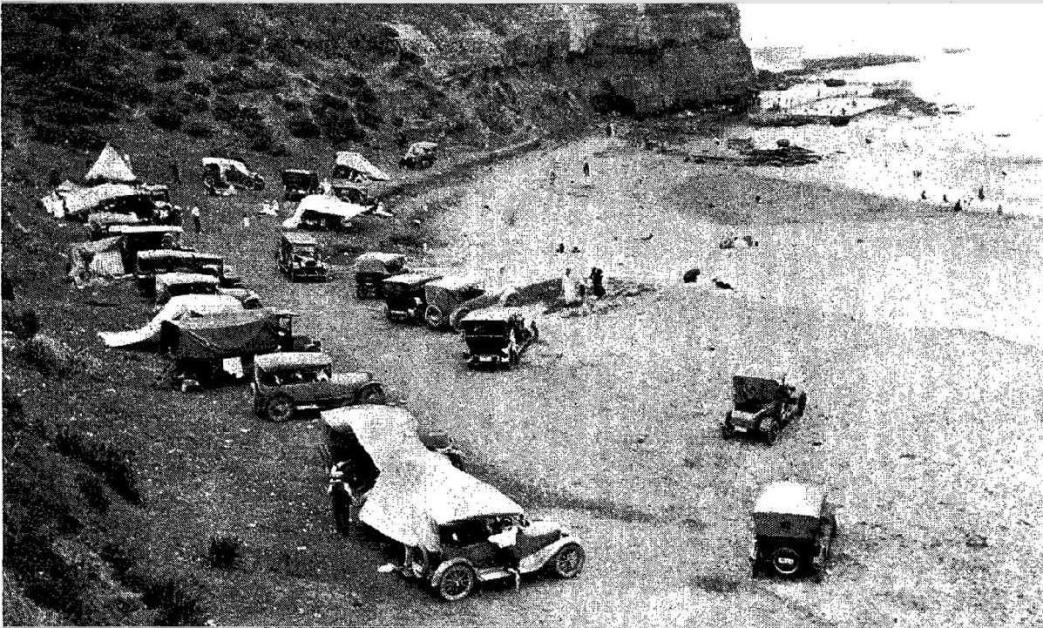
It is a very pleasant run from Sydney to Newport, and will be much more enjoyable when the Spit bridge is a reality and the wearisome wait for the punt is a thing of the past. Motoring (1924, January 2). Sydney Mail (NSW : 1912 - 1938), p. 37. Retrieved from http://nla.gov.au/nla.news-article166151463
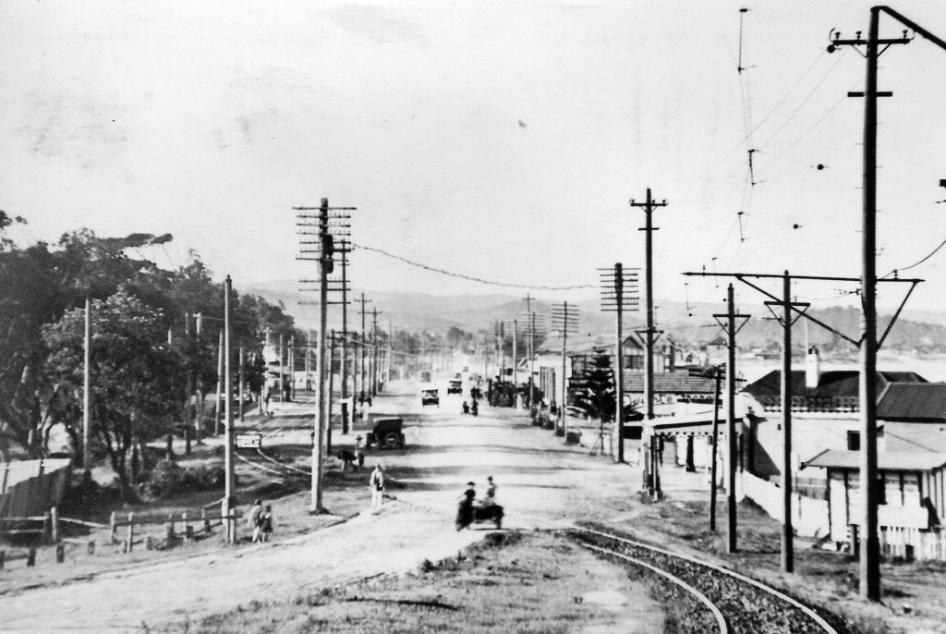
A mile south of Narrabeen Tram Terminus, 1925. Visit; The House at the end of the Road, Narrabeen
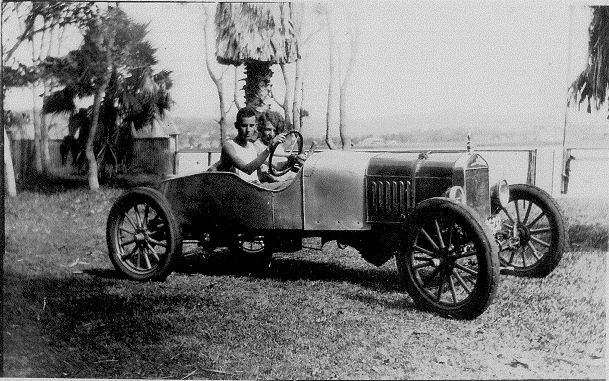
SYDNEY EXPERIMENTER IN LONDON. Mr. Leonard Schultz, the son of Mr. and Mrs. Charles Schultz, of Warraba, Lane Cove, who has distinguished himself In Sydney as a wireless experimenter, has arrived in London by the Aquitania from Now York. His parents have received word of his successful tour through America, where he has investigated wireless development. He intends touring Europe before returning to Australia. WIRELESS. (1927, February 28). The Sydney Morning Herald(NSW : 1842 - 1954), p. 6. Retrieved from http://nla.gov.au/nla.news-article16357918 The lady he is pictured with at Billabong in 1928 was his first wife; The House at the end of the Road, Narrabeen
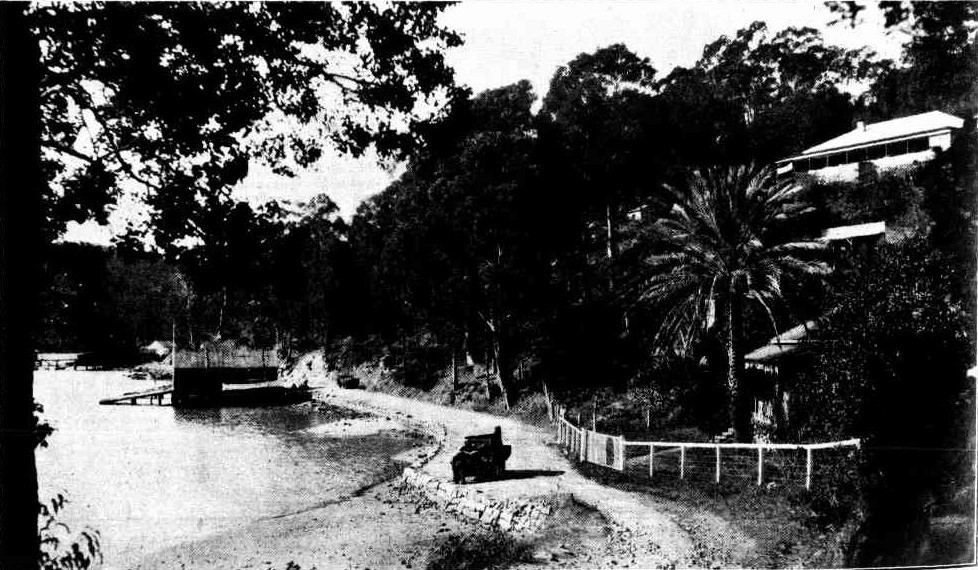
A Picturesque Motor Drive — View at Church Point (Pittwater), from McCarr's Creek. With the approach of warmer weather Sydney motorists are making preparations for outings to pleasure resorts near the city. The charms of the Manly and Pittwater districts and one of the most popular spots near Broken Bay is Church Point. MOTORING. (1929, August 28). Sydney Mail (NSW : 1912 - 1938), p. 45. Retrieved from http://nla.gov.au/nla.news-article160395048
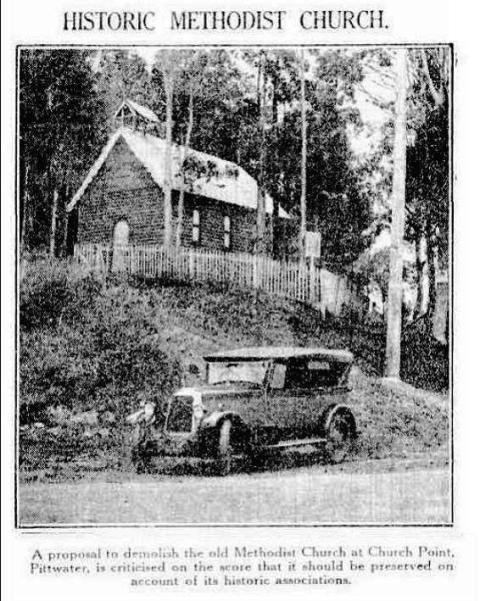
Above: HISTORIC METHODIST CHURCH. (1930, March 19). The Sydney Morning Herald(NSW : 1842 - 1954), p. 16. Retrieved from http://nla.gov.au/nla.news-article16634674
EARLY PITTWATER. HISTORICAL SOCIETY'S PILGRIMAGE.
Members of the Manly, Warringah, and Pittwater Historical Society on Saturday afternoon made a pilgrimage to historic spots In the Pittwater district. The party, numbering 34, proceeded to Church Point, and inspected the old Methodist Church and cemetery. Mr. P. W. Gledhill, honorary secretary of the society, delivered n lecture on the early history of Pittwater. He said that the church was opened In 1873, and that the land for the cemetery was given by Mr. William Oliver. Mr. John Wheeler road a paper on Scotland Island and McCarr's Creek.
EARLY PITTWATER. (1926, November 22). The Sydney Morning Herald (NSW : 1842 - 1954), p. 10. Retrieved fromhttp://nla.gov.au/nla.news-article16333867
EARLY PITTWATER. TO THE EDITOR OF THE HERALD.
Sir,-With reference to the account in the "Herald" of last Saturday of the pilgrimage of the Manly, Warringah, and Pittwater Historical Society to historic spots in the Pittwater district, I may state I was a member of the party, and noticed the dilapidated condition of the old church at Church Point The cemetery is badly neglected, and requires fencing and other repairs, while the building itself needs painting. As I understand services are to be resumed shortly, it would appear advisable that the Methodist Church authorities should mike an effort to restore the building and land to Its one time orderly condition so that the old church may again become an attractive place of worship for residents and visitors In the Pittwater district. I am etc.,
Stanmore, Nov. 25. J. S. N. WHEELER. EARLY PITTWATER. (1926, November 26). The Sydney Morning Herald (NSW : 1842 - 1954), p. 12. Retrieved from http://nla.gov.au/nla.news-article16321192 - Visit Church at Church Point
A MOTOR CAR ON THE PITTWATER-ROAD, NARRABEEN
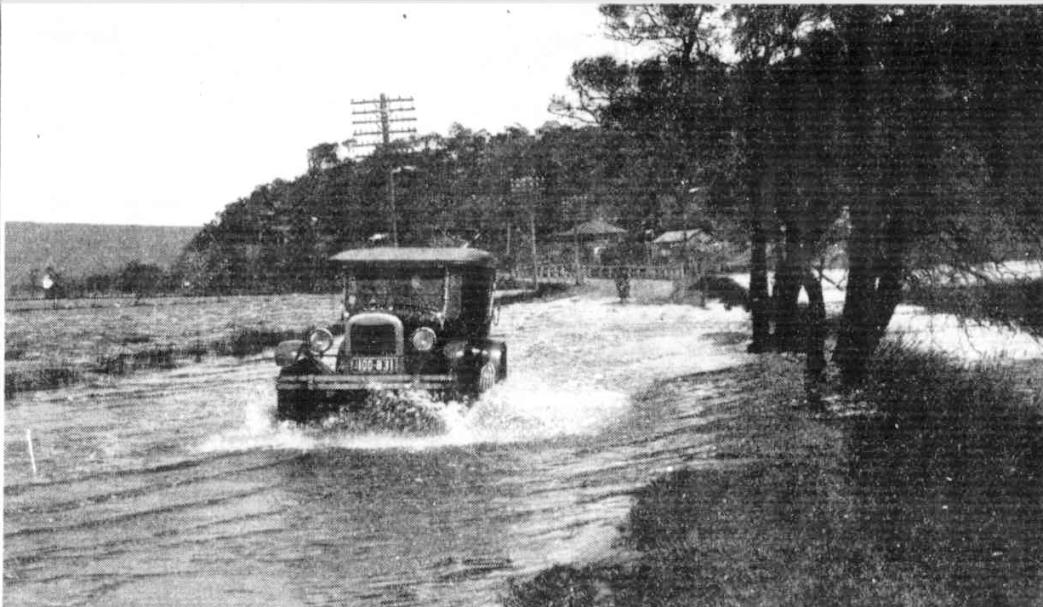
The foreshores of the lake were flooded by the recent heavy rains. The Warringah Council workmen opened a way to the sea on Sunday morning. Forestry, Floods, and Kindergarten Work (1927, November 30). Sydney Mail (NSW : 1912 - 1938), , p. 9. Retrieved from http://nla.gov.au/nla.news-article158295859
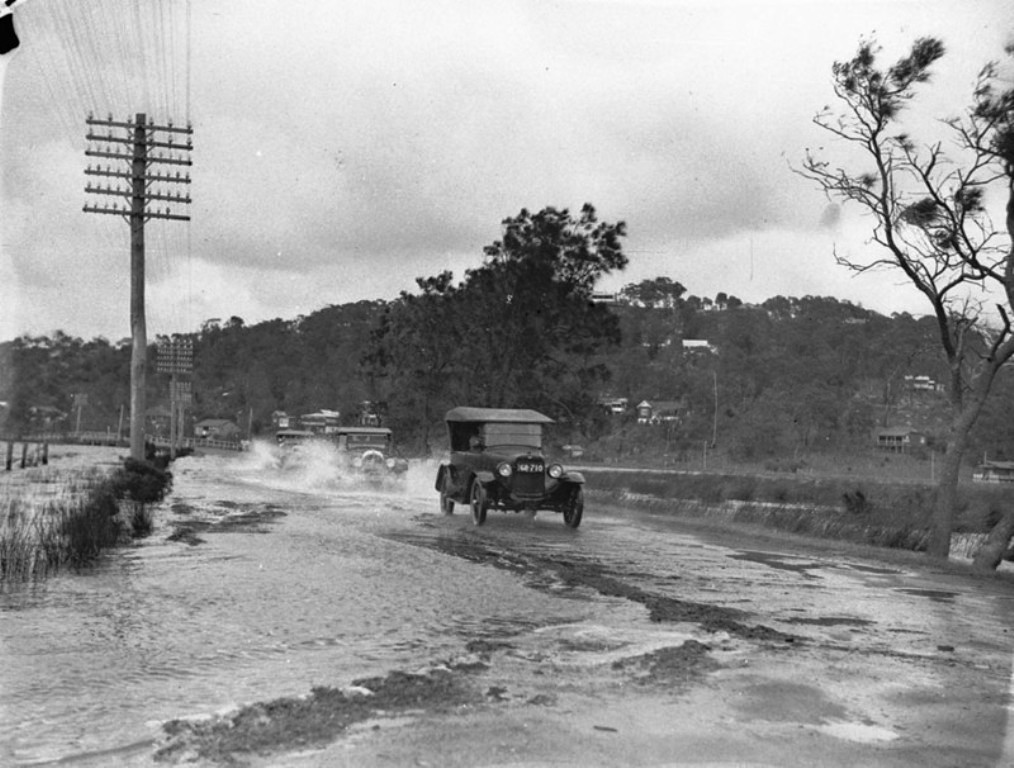
A 1926 Overland, a 1928 (?) Chrysler, and a 1928 (?) Dodge ploughing through Narrabeen floods - Image. No: hood_06391- from the collections of the State Library of NSW.
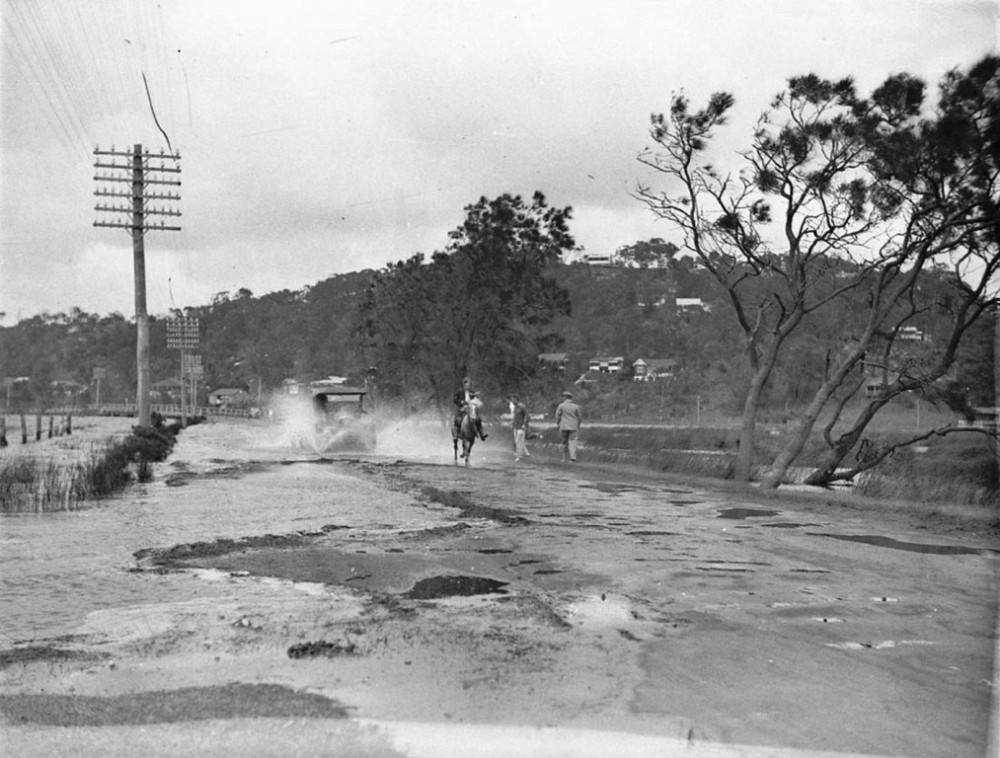
A car and a horse plough through a flooded road, Narrabeen - Image. No: hood-006394 from the collections of the State Library of NSW
Visit: Narrabeen Lagoon And Collaroy Beachfront: Storms And Flood Tides Of The Past
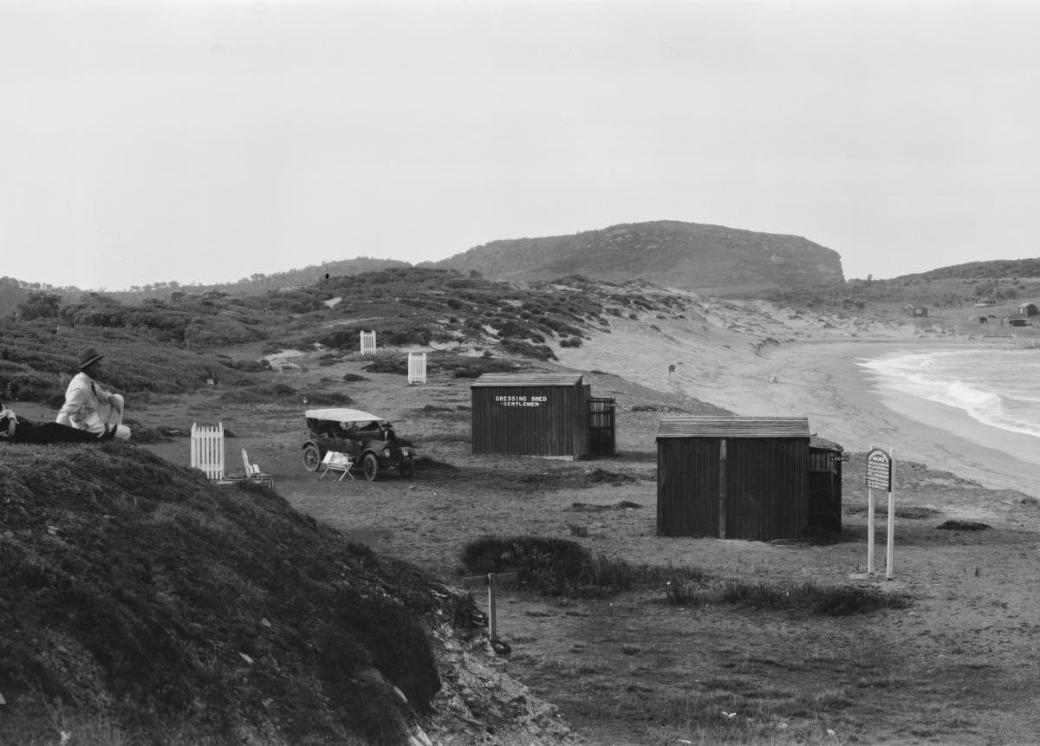
'Panorama of beachgoers at Avalon Beach', New South Wales, ca. 1925 (1920; no mid-beach dressing sheds in picture as there are in a 1930 picture) - section enlarged to show dressing sheds on Avalon Beach at this point in time and, a car! The beginnings of Norfolk Pines, planted by A J Small are in the white wicker tree guards. Image No.: nla.pic-vn6217968 by EB Studios, part of the Enemark collection of panoramic photographs, courtesy National Library of Australia.
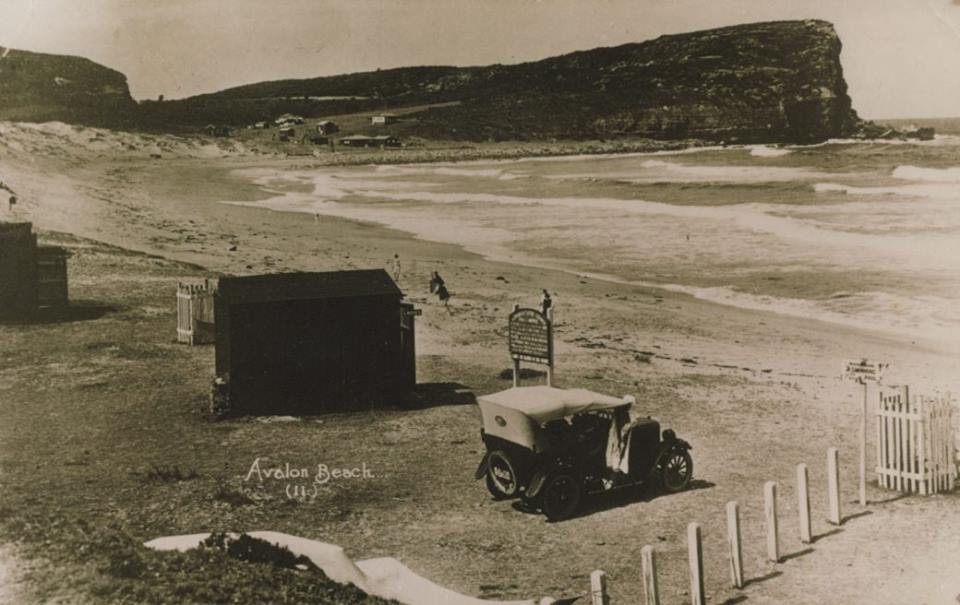
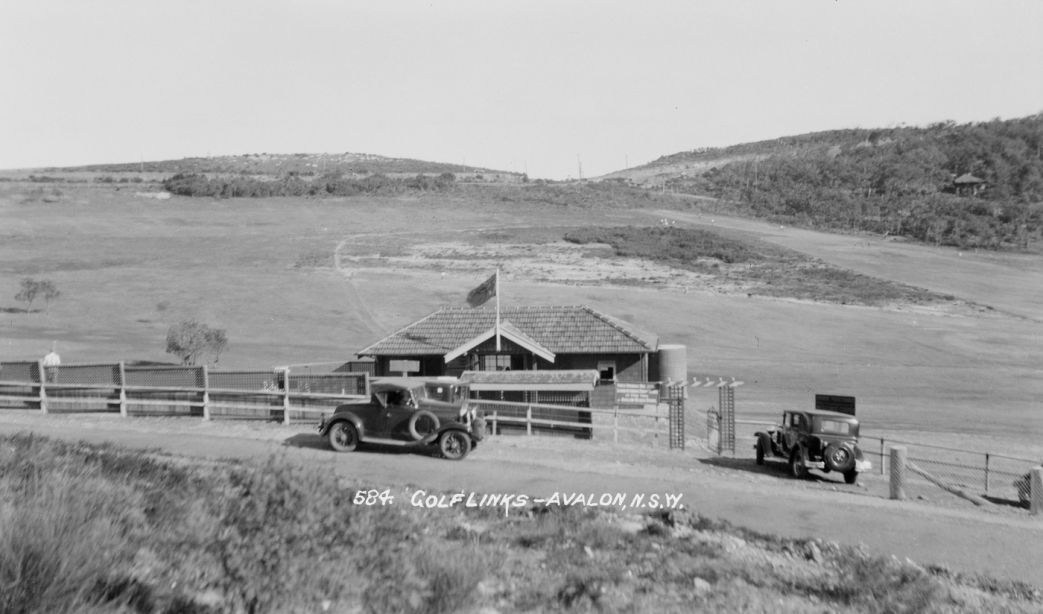
Avalon Golf Links, by Samuel Wood - postcard photonegatives of Avalon, Bilgola and Newport, ca. 1928, Image No: a1470007, courtesy Mitchell Library, State Library of New South Wales.
Visit: Avalon Beach Golf Links: Pittwater Fields of Dreams II
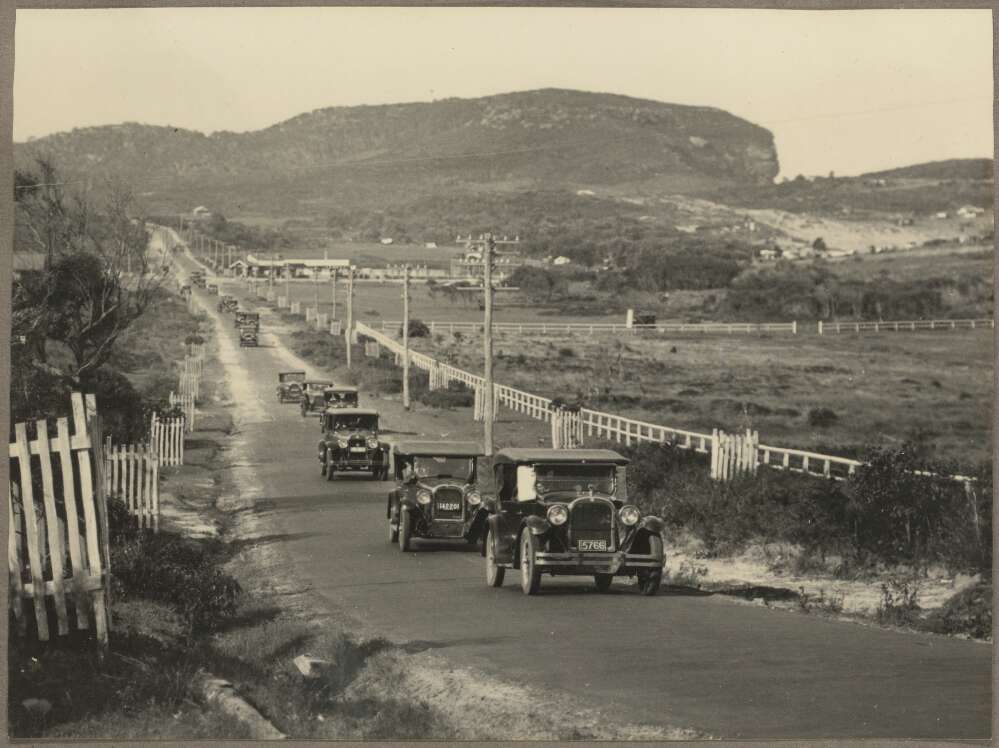
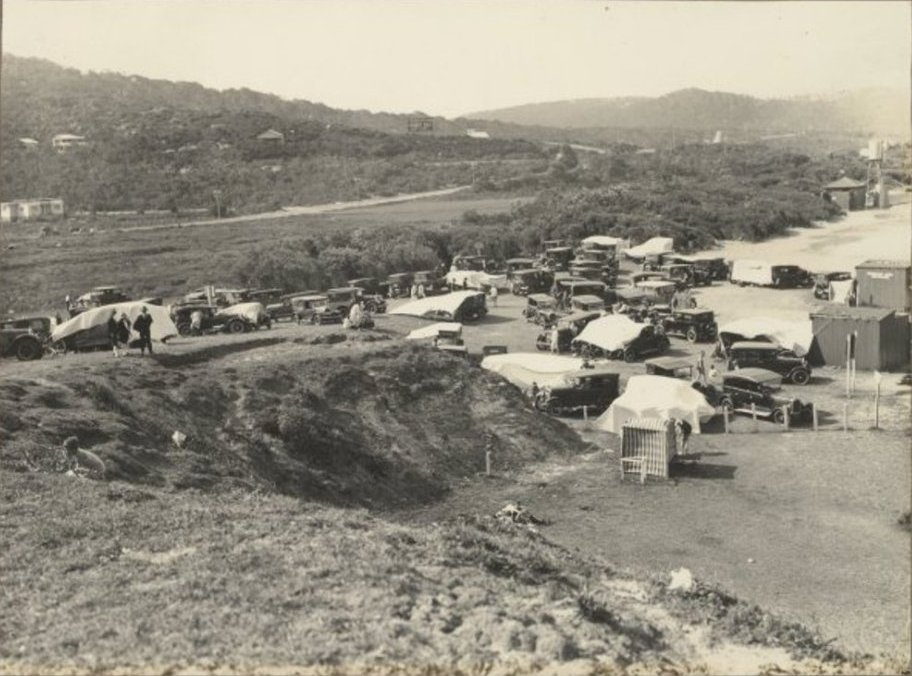
This photo shows the extent of the dressing sheds and showers in 1930 at Avalon Beach: 'Motor cars, some with tarpaulins attached, parked adjacent to Avalon Beach, New South Wales, 1930', nla.pic-an24768648, Part of Prospectus photographs of Avalon, 1930 [album], courtesy National Library of Australia.

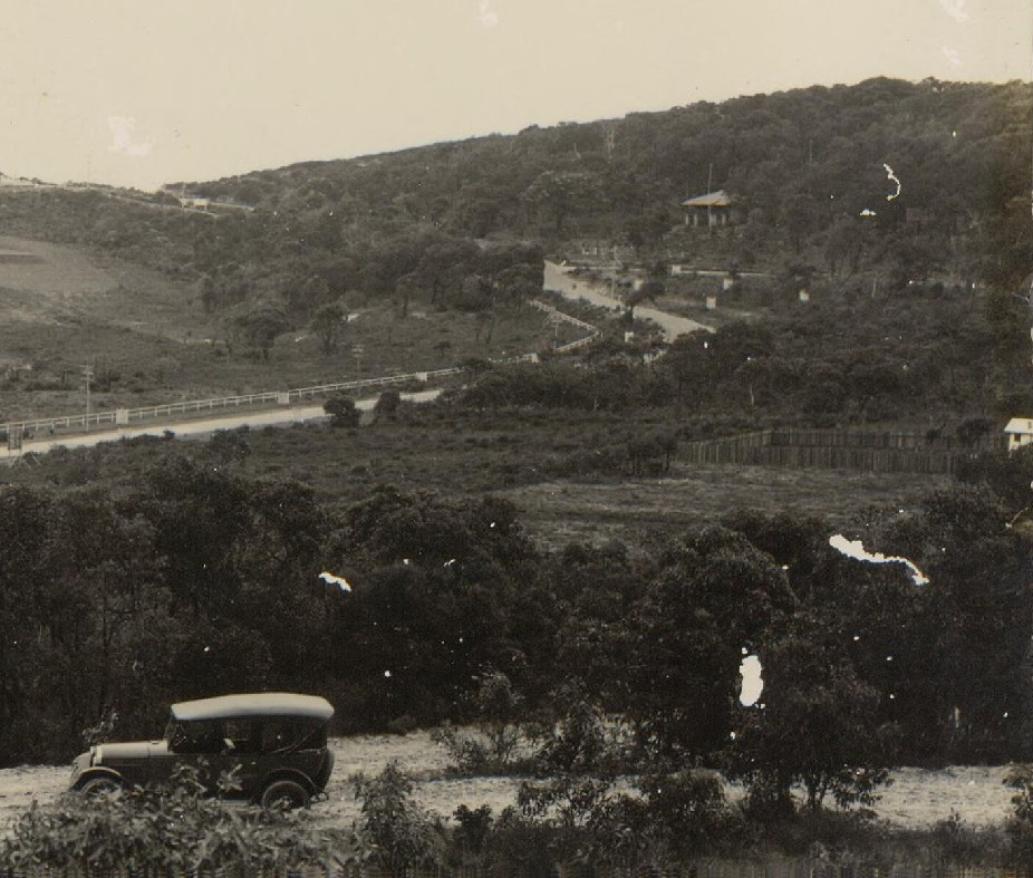
Avalon Beach road looking south - 1932 from;
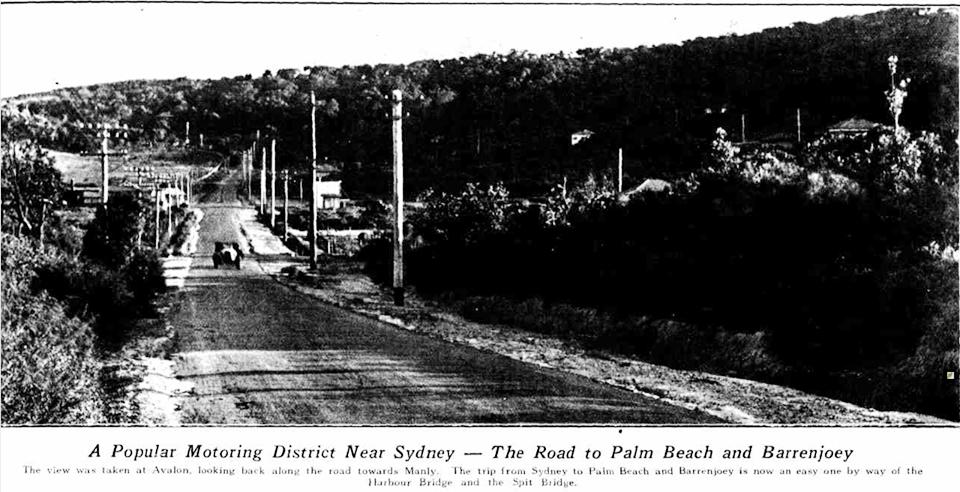
Popular Motoring District Near Sydney — The road to Palm Beach and Barrenjoey. The view was taken at Avalon, looking back along the road towards Manly. The trip from Sydney to Palm Beach and Barrenjoey is now an easy one by way of the Harbour Bridge and the Spit Bridge. Motoring: Search for Petrol Substitutes (1932, August 24). Sydney Mail (NSW : 1912 - 1938), p. 44. Retrieved from http://nla.gov.au/nla.news-article166225233
DANGEROUS TURN ELIMINATED.
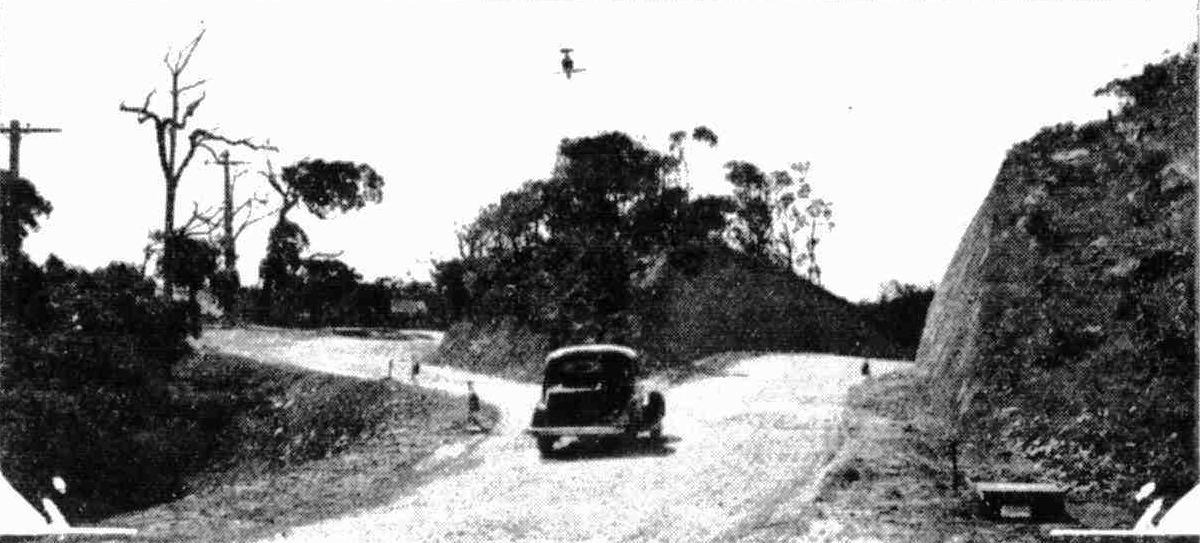
Extensive improvements are being made to the road to Palm Beach. This big cutting on the Newport-road has just been completed. The old blind turn, which was a source of danger when traffic was heavy, is on the left. Another cutting is being made at the northern end of Mona Vale. Tents and Motor-Campers (1935, November 20). Sydney Mail (NSW : 1912 - 1938), p. 50. Retrieved from http://nla.gov.au/nla.news-article160499041
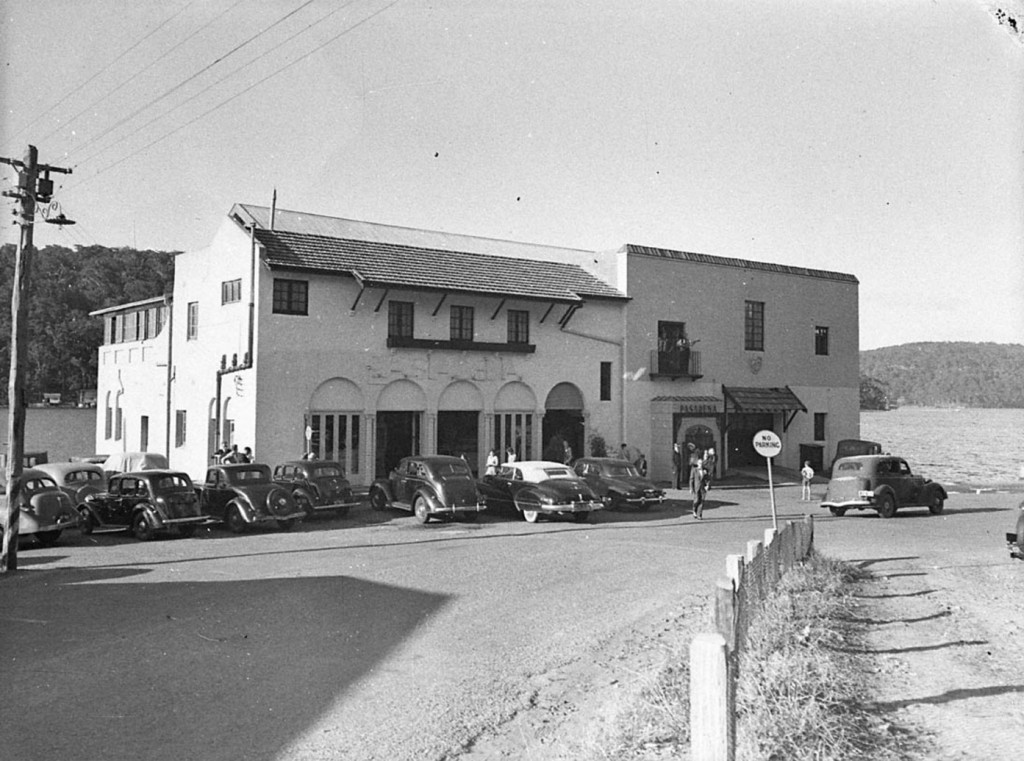
From Album: 'Pasadena waterside restaurant, Church Point (taken for Mr Teasdale-Smith), 1950' by Sam Hood. Images No: Home and Away - hood_11654h (top) hood_11650h and hood_11652h (below) - courtesy State Library of NSW.
Visit: Pittwater Restaurants You Could Stay At Pasadena Road House – Church Point
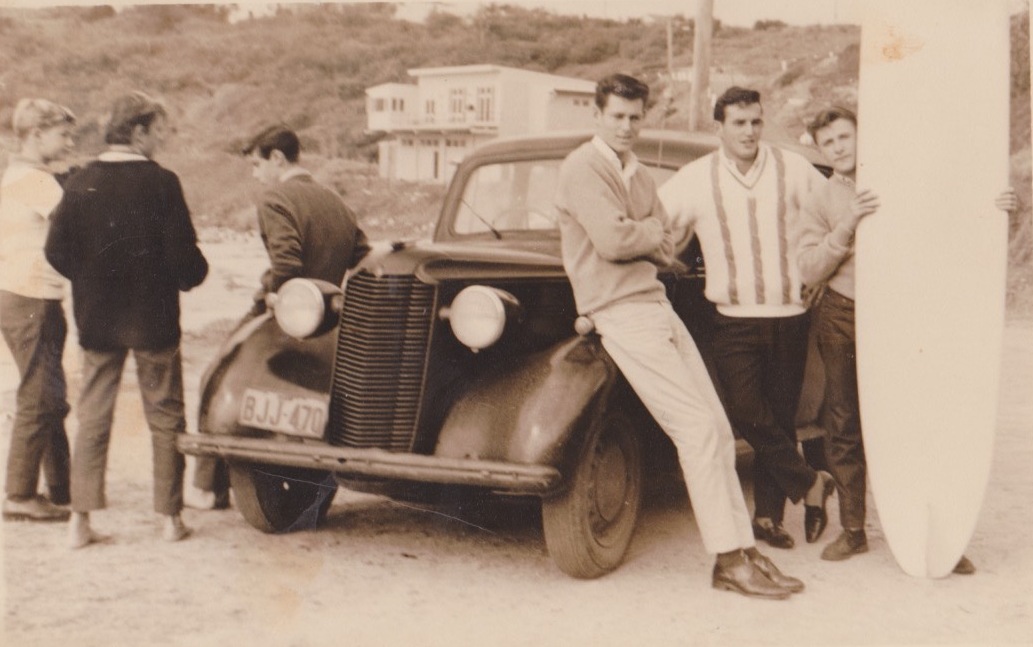
So, as you can see from just a few of these photos, many shared in past History pages, there's a lot to see in the backgrounds of these motor car features of the way this place once was.
Extras
